Ep. 70: My Hero Academia v1 by Kohei Horikoshi & Battle Angel Alita v1 by Yukito Kishiro
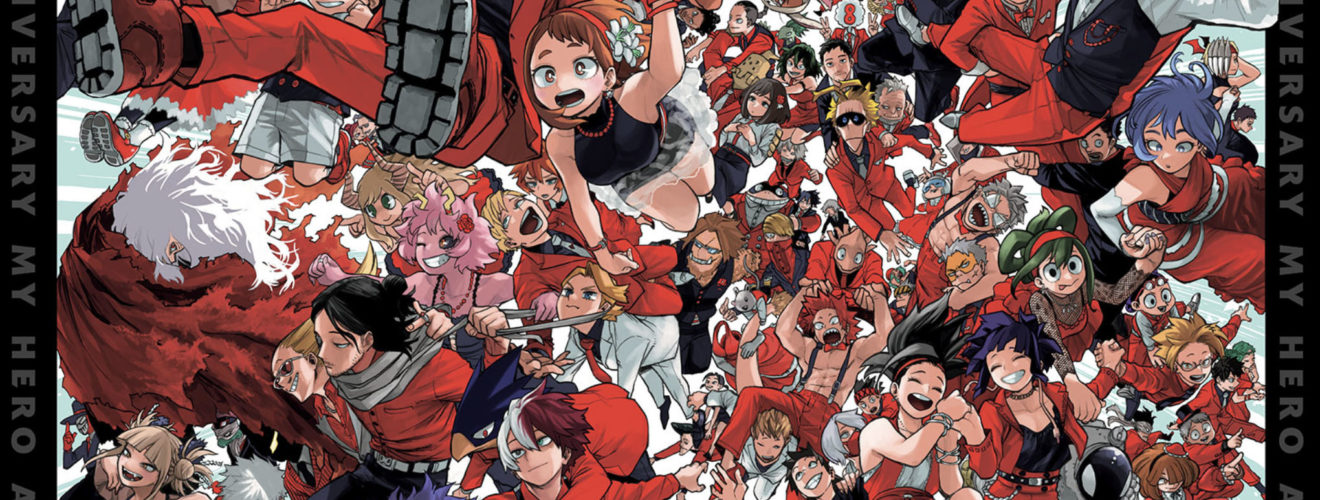
It’s another double-header this week as the crew dives into one of the bestselling manga of 2021, My Hero Academia by Kohei Horikoshi, followed by a blast back to the past with seinen manga classic Battle Angel Alita by Yukito Kishiro! Two great manga that grow and change significantly in the telling gives us lots to explore this week on Mangasplaining!
Powered by RedCircle
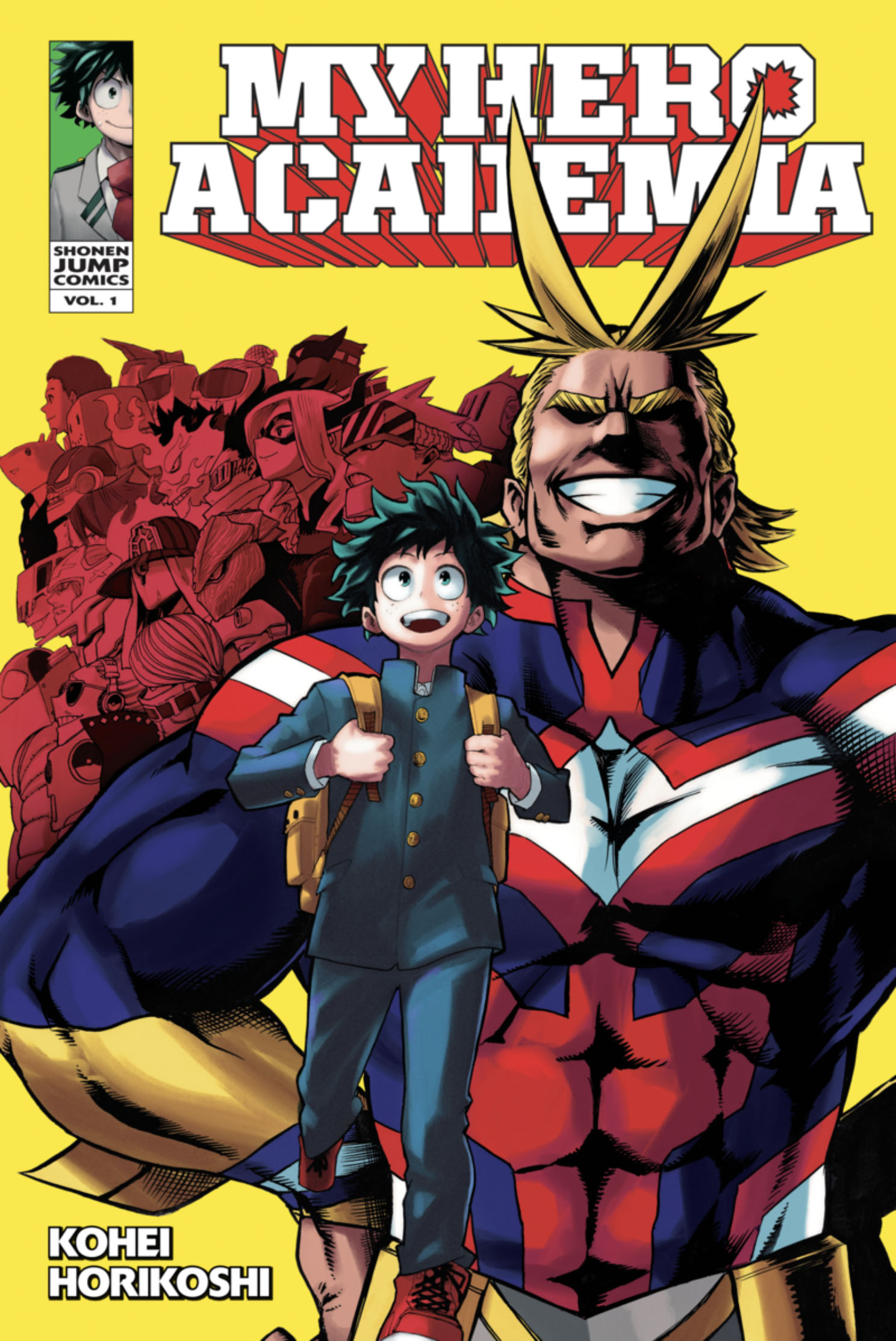
My Hero Academia Volume 1
By Kohei Horikoshi
Translation and English adaptation by Caleb Cook
Touch-up art and lettering by John Hunt
Design by Shawn Carrico
Edited by Mike Montesa
Published by VIZ Media (Print/Digital)
Audio editing by David Brothers. Show notes by Christopher Woodrow-Butcher and Deb Aoki.
Before We Get Started: SPOILERS!
We show a few pages from the most recent chapters of My Hero Academia, chapter 355 and 356, for artistic comparison with the early volumes. We don’t believe there are any spoilers on these pages, but still, heads-up.
00:45 So the official title of this manga, in Japanese, is 僕のヒーローアカデミア pronounced Boku No Hero Academia. “Boku No” means “My” in English, so the actual title of the book, in English, is My Hero Academia. It could not be a more direct translation. But weebs, which is to say weeaboos (a derisive term for hardcore anime and manga fans) have a pretty specific tic of only referring to anime and manga series by their Japanese names… Even when the series has an official English name, even when the series title is a literal translation of the Japanese. It’s a form of fandom gatekeeping! 😀
As for the piracy thing, for the most part the scanlations/leaks/pirated versions of the series are still generally referred as Boku No Hero Academia, so a lot of Very Online People refer to it by that title when they discuss it. It’s a giant pile of whatever, honestly, though I’m sure even this gentle admonishment will cause controversy somewhere!
Shoganai (it can’t be helped). Legally support manga whenever you can. Shonen Jump online is $2 a month and you can read THE WHOLE SERIES for that pittance. We’re not even being paid to say that. 😉
01:30 Hey, chances are this might be a popular episode because of picking a big Shonen Jump title, I figured. Honestly our Spy x Family episode is our most popular episode that isn’t episode 0 or 1 (which new listeners tend to automatically download when the subscribe to the podcast). It’s a wonder we haven’t just like switched to being a Shonen Jump exclusive podcast, lol.
But yeah, let’s reintroduce everyone! For full bios check out our ABOUT page.
03:30 Here’s how VIZ describes the book, which we did not read on air.
Middle school student Izuku Midoriya wants to be a hero more than anything, but he hasn’t got an ounce of power in him. With no chance of ever getting into the prestigious U.A. High School for budding heroes, his life is looking more and more like a dead end. Then an encounter with All Might, the greatest hero of them all, gives him a chance to change his destiny…
VIZ Media
07:08 As mentioned, this was not author Kohei Horikoshi’s first kick at the can for Shonen Jump serialization. After 3 one-shot manga between 2007 and 2008, Horikoshi got his first serialization in Weekly Shonen Jump with the manga Oumagadoki Zoo, which ran for 5 volumes and just under a year from 2010-2011. This one hasn’t been translated into English yet.
His next title, Barrage (which David mentions) did get translated, and was released in two volumes by VIZ Media in 2012. A short run from a Shonen Jump title USUALLY denotes premature cancellation, by the way. It’s a Prince and The Pauper-type story set in a steam-punky fantasy setting. I have several friends who really loved the book, apparently much moreso than the reading audience in Japan did. It’s even weirder that with only 2 volumes, VIZ picked this one up for North America? Regardless, Barrage needed to stumble so that My Hero Academia could fly and succeed. And succeed it has!
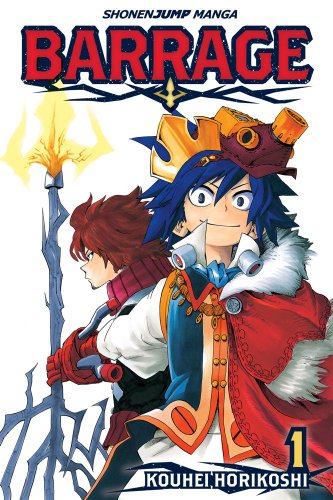
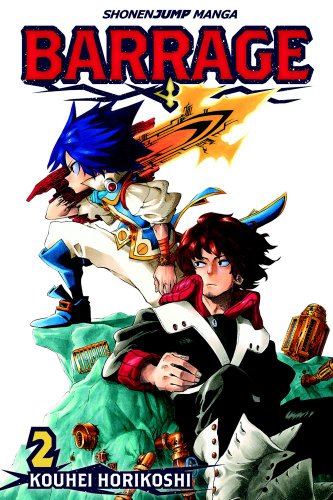
My Hero Academia has been running more-or-less weekly since July 7, 2014. VIZ licensed and released the title VERY quickly, with the first translated volume landing on August 4th, 2015. The series is currently sitting at 35 published volumes, with well over 65 million copies in circulation worldwide, making it one of the bestselling manga series of all time. My Hero Academia has been adapted into five seasons of television anime (and a sixth on the way), and three animated feature films, and the manga . Legendary Studios, the folks behind the Godzilla and Detective Pikachu movie, even licensed it for a live-action adaptation, which is currently in development.
08:00 Lotsa superhero references this week, and I don’t think it’s really worth glossing all of them. But the ‘Spider-Man joining the X-Men’ comment in particular that David makes is a good one.
Spider-man, at its core, is about a kid who never asked to get powers. When he gets them, he then learns that getting super powers also means he has a responsibility to use them wisely. Meanwhile, The Uncanny X-Men are about people who are born with powers, but having those powers place a different sort of burden on them. I think this sets up the dichotomy between Deku and the other characters and their attitudes pretty well, actually.
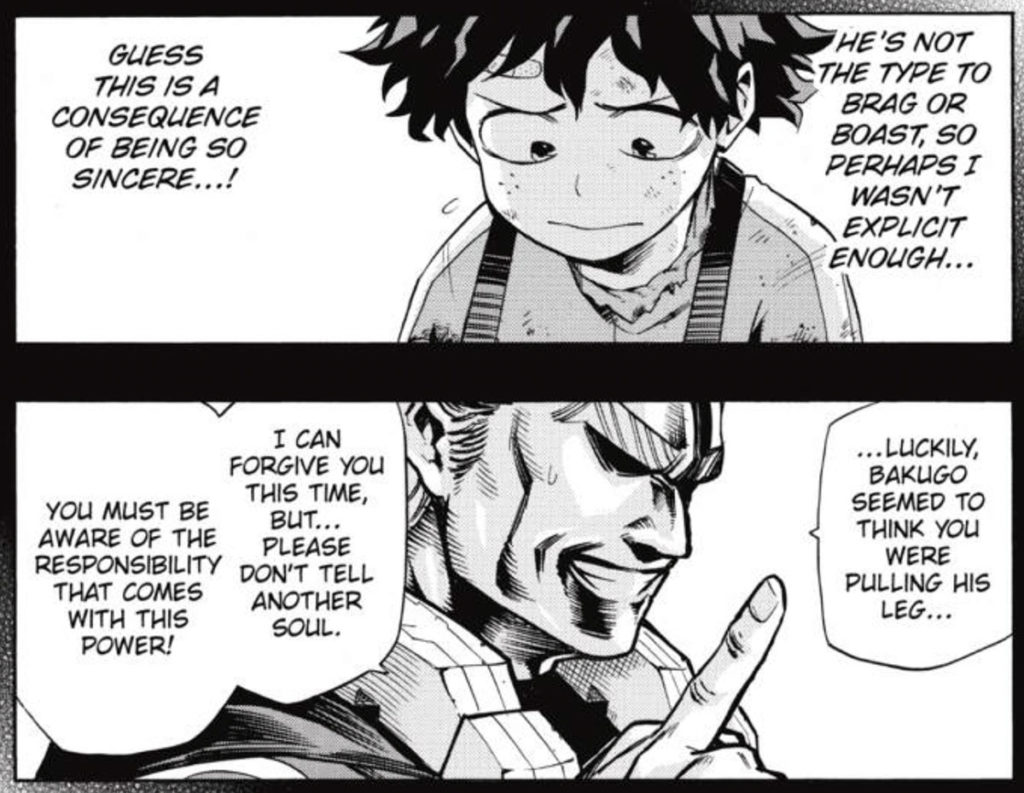
08:41 So the ‘Best & Worst Manga 2015’ panel is a real blast from the past! It took place July 2015 at San Diego Comic-Con, and Deb, David, and Christopher were on the panel, alongside pals Brigid Alverson (journalist) and Eva Volin (librarian), and it was a hoot. Deb actually put the whole Powerpoint deck up online, and going through it you can see the sorts of books that Deb, David, and Christopher chose have definitely influenced this podcast. It’s a lot of fun. Best & Worst Manga 2015 Panel Slideshow.
09:10 As David mentions, the introductory pages of My Hero Academia offer up a really neat panel that pays homage to the various superheroes that have come before. Calling it a “Copyright Infirgement Corner” is a pretty fun description, but I do feel like a few details were added to keep the lawyers away. Here’s who we picked out of this image:
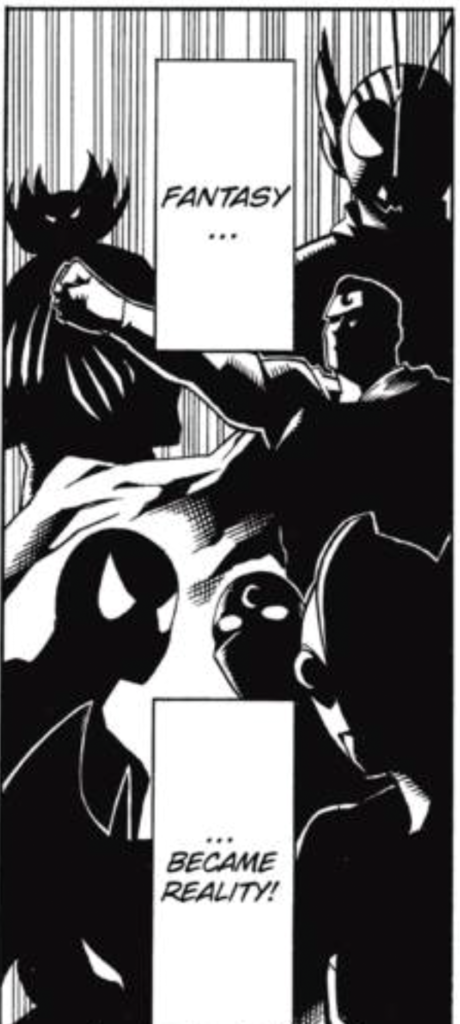
So clockwise from the top left, it’s Wolverine, Kaito Ace (?) Superman, Ultraman, Doctor Midnite or Moon Knight(?), Devilman, and Spider-Man.
Deb mentions Kaito Ace, but I don’t think that’s right, since Kaitou Ace is a Sailor Moon hero. It must have been a Shotaro Ishinomori character, no Japanese superhero homage is complete without Ishinomori, maybe Deb can shed some light on it with further research.
[Deb:] I mis-remembered the name — I’m referring to Sea Jetter Kaito, the Ishinomori superhero from the Mangattan Museum in Sendai. I’m not sure if that’s the reference in this panel, but here’s a look so you can see why I made this guess, tho now that I’m looking at the panel above, I’m wondering if it’s one of the various Kamen Riders? I’m sure there are tokusatsu fans who will instantly recognize the character above — please add your much more educated guesses in the comments!
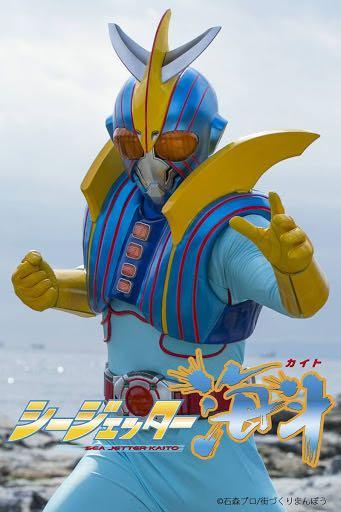
10:55: The art is VERY idiosyncratic in the first volume. Here’s a few pages that show what I’m talking about, just how elastic these characters are, and how extreme the facial expressions and character designs can be.
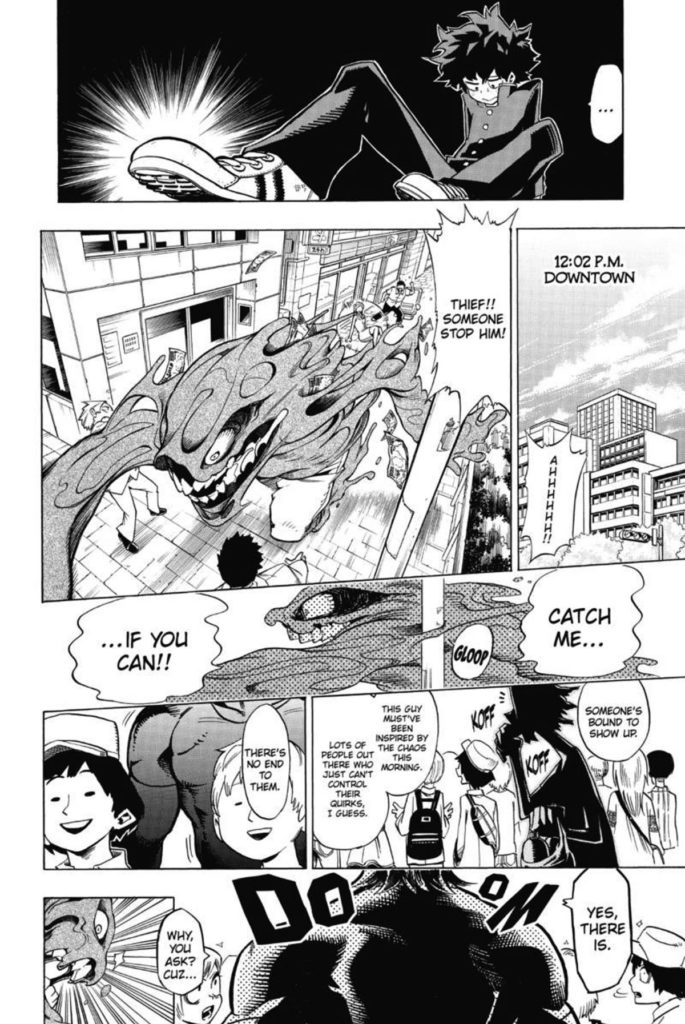
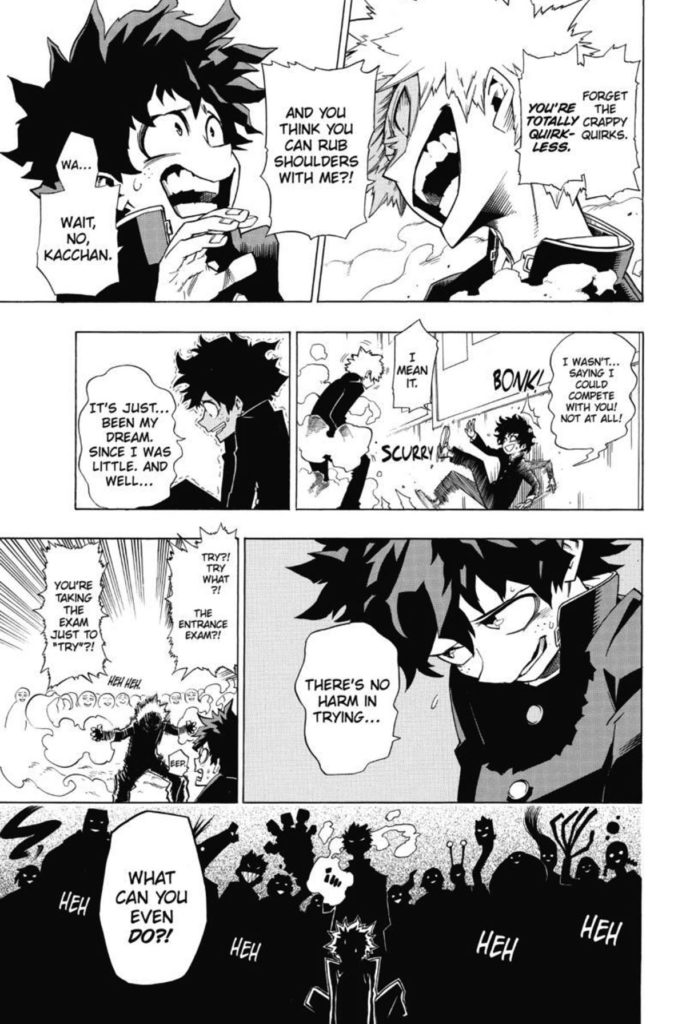
The book has been pretty consistent, story-wise, since Chapter 1 (with a few fun reworks, like Deku’s costume), but the artwork has tightened up considerably, possibly influenced by the anime’s character designs (as often happens). You can see how different (and how similar) it looks in the 8th Anniversary illustration released a few weeks ago:
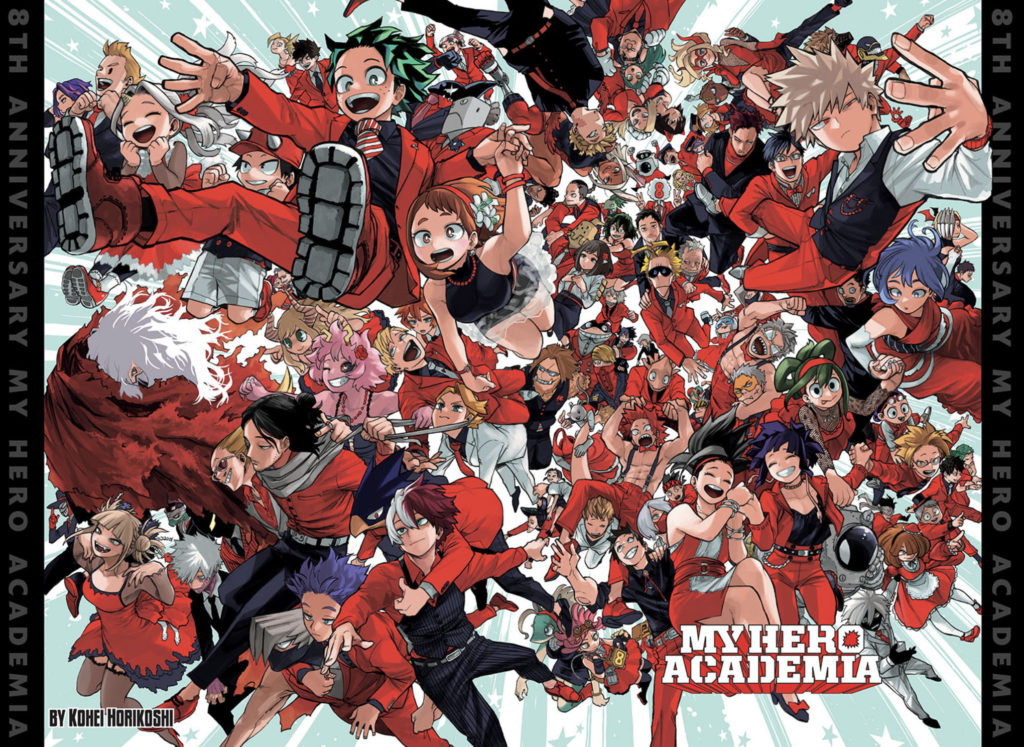
11:14 Yeah, from the very first moment I saw ‘real’ All Might, I was convinced that Horikoshi was moving his design between two different American Comics Styles, “Superheroes” and “Indie”. I think it’s kind of funny too, as later on All Might is revealed to be Japanese, or at least have a Japanese name, so maybe he’s just a huge American comics otaku? Pretty fun.

11:15 I keep mentioning American comics creators like Chris Bachalo, Humberto Ramos, and Joe Madureira. These three are artists who I really liked, first and foremost, but who became known in the 1990s for their very idiosyncratic art styles, with Ramos and Joe Mad in particular drawing deep inspiration from anime (and occasionally manga).
In particular, Horikoshi’s style on My Hero Academia, a book about young people becoming superheroes at a school, reminded me a lot of Chris Bachalo’s turn on Marvel’s Generation X, another book about young people, in this case junior X-Men, becoming superheroes at a school. You can get more info on all of the artists above, but here’s the cover to Generation X #1 so you can see what I’m getting at, alongside the cover of #5 (actually issue #9) after Bachalo changed his style quite a bit. It’s even closer to what Horikoshi is doing on My Hero Academia.
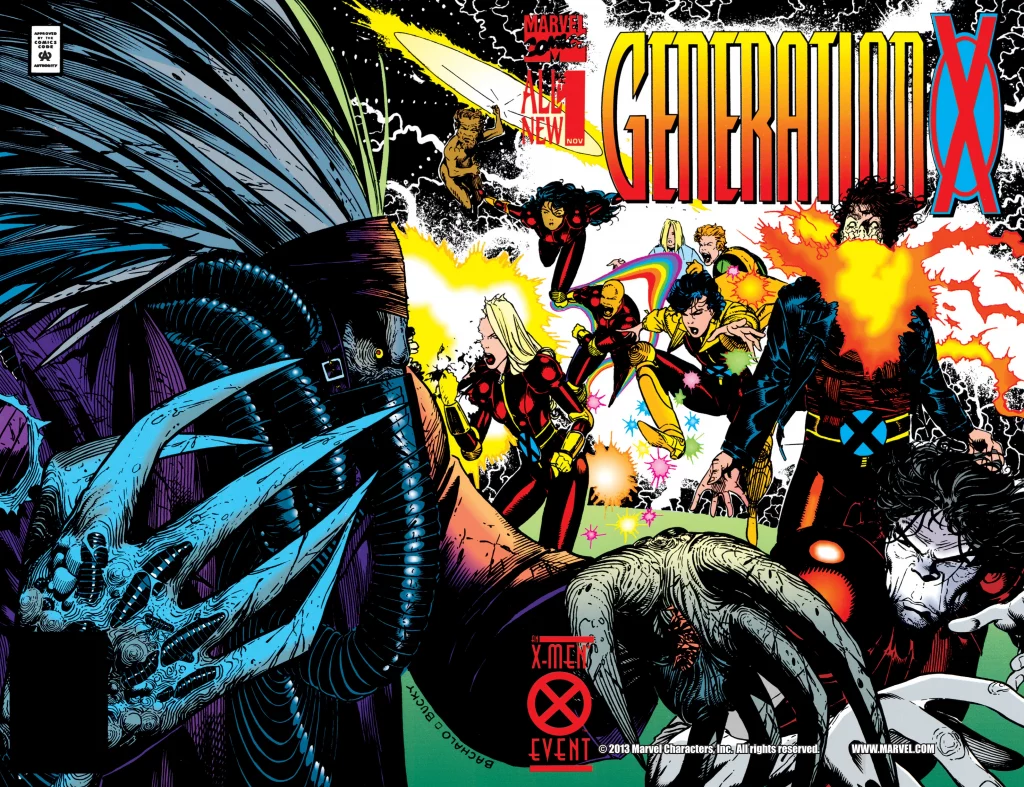
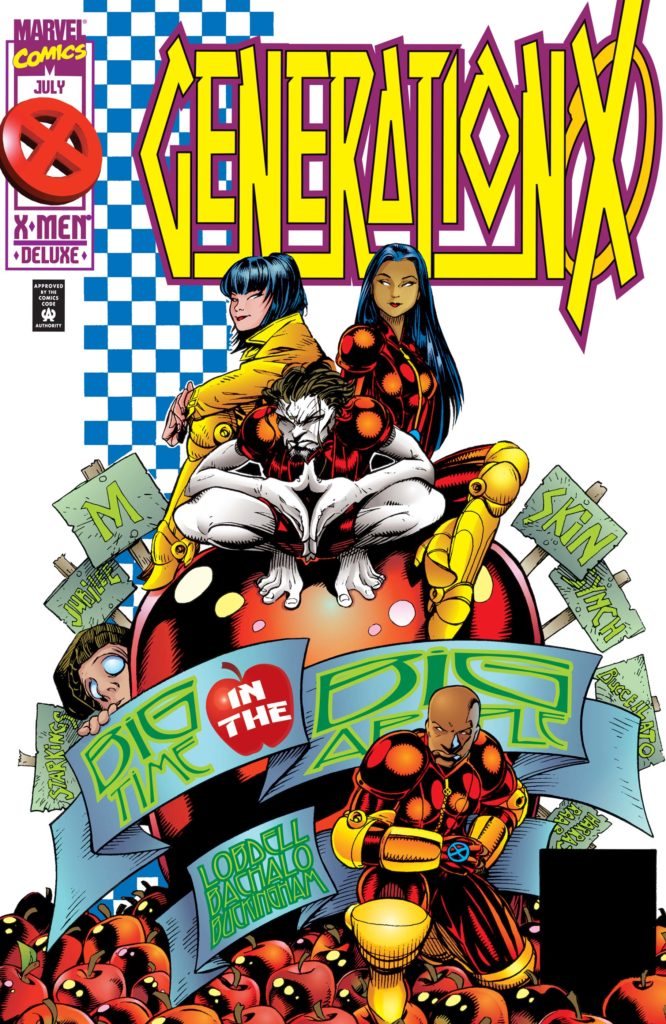
11:40 Human-form All might (aka Chad Skellington), and Jhonen Vasquez’s Johnny the Homicidal Maniac.
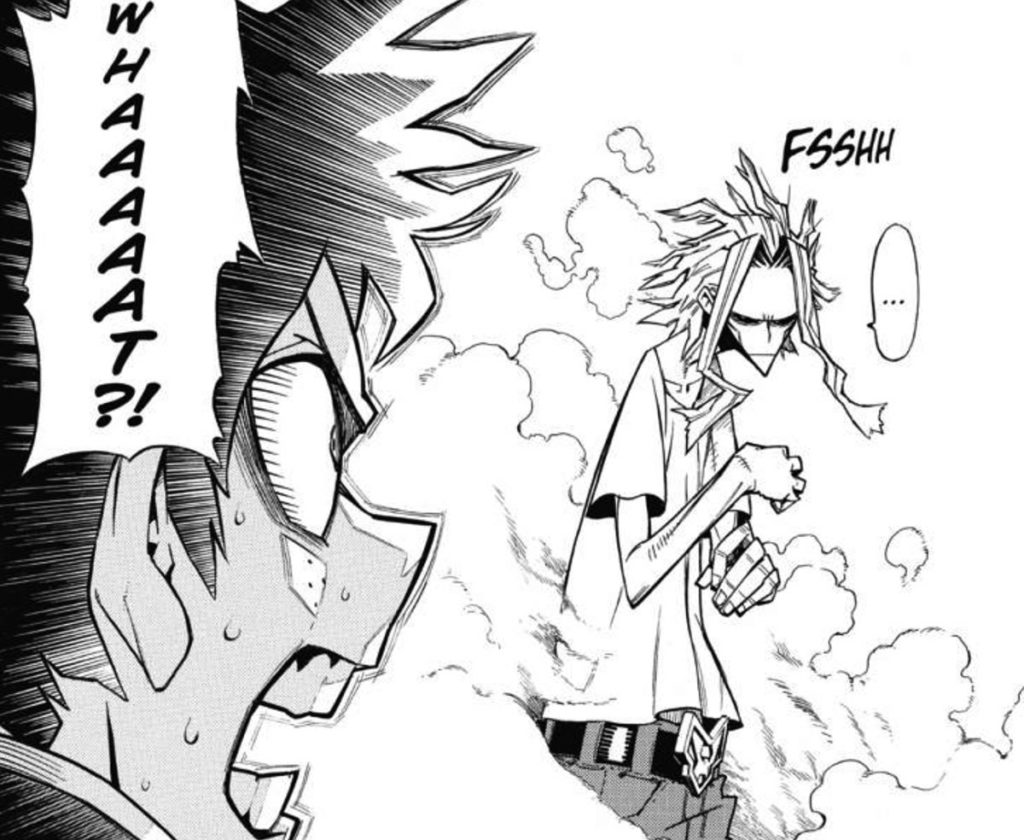
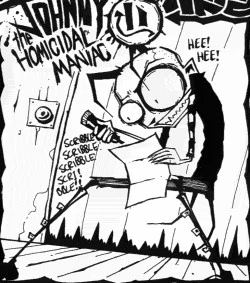
11:50 The plasticity of the faces as they exist over the skulls, particularly with regards to teeth, is a hallmark of the art in the first volume. It’s one of the things that specifically recall Joe Mad and Ramos.


13:45 A few years back (2018), American comics writer Scott Snyder (Batman, Nocterra) came out with his love and affection for the My Hero Academia anime.
I believe Snyder later checked out the manga too! I know it might not seem like that big a deal, but even in 2018 it was still very rare for superhero creators to talk about anime and manga that they loved outside of a very narrow window (Lone Wolf & Cub is a fave). It was a pretty cool moment, and I know that Snyder has recommended it through many different forums.
Also, do not read the comments.
15:02 So yeah, All-Might is drawn in a separate style to the other characters, and at some points in the story, the contrast becomes super, super clear.


Chip asks if how All Might is drawn changes in later chapters, and if it gets better. Here’s what All Might looks like around Chapter 62, about half a year after this volume, and you can decide for yourself!

19:00 There is the idea of haves versus have-nots that’s introduced early, when Deku doesn’t have a superpower… But that’s mostly ignored in the series once he DOES get powers. This idea is explored further in the spin-off series My Hero Academia: Vigilantes, which is about people who have powers but aren’t ‘licensed’ to be heroes but decide to become heroes anyway, and how that’s Very Illegal. It is a bit more light-hearted than I make it out to be, but fans of My Hero Academia will probably dig it.
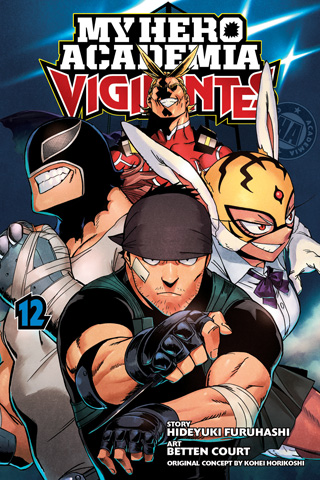
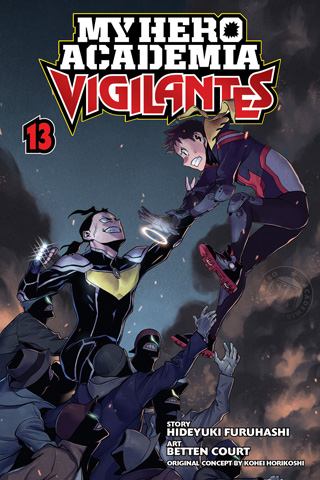
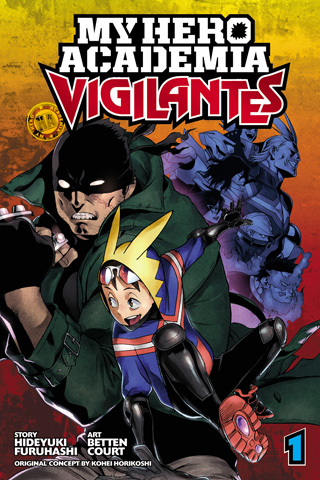
Here’s how VIZ describes volume 1:
My Hero Academia: Vigilantes Volume 1: Koichi Haimawari couldn’t make the cut to become an official hero, so he uses his modest Quirk to do good deeds in his spare time. Then one day a fateful encounter with some local thugs leads him to team up with two other unlikely heroes. None of them really know what they’re doing, but they’ve got the courage—or foolishness—to try. But they soon discover fighting evil takes more than just being brave…
VIZ Media
21:28 Sorry, if you talk for two hours a week for 70+ episodes, eventually you pronounce it Narutoo at least once. ごめん。
22:55 David loves Bakugo’s costume, and it’s not hard to see why. The explosion mask is pretty good.
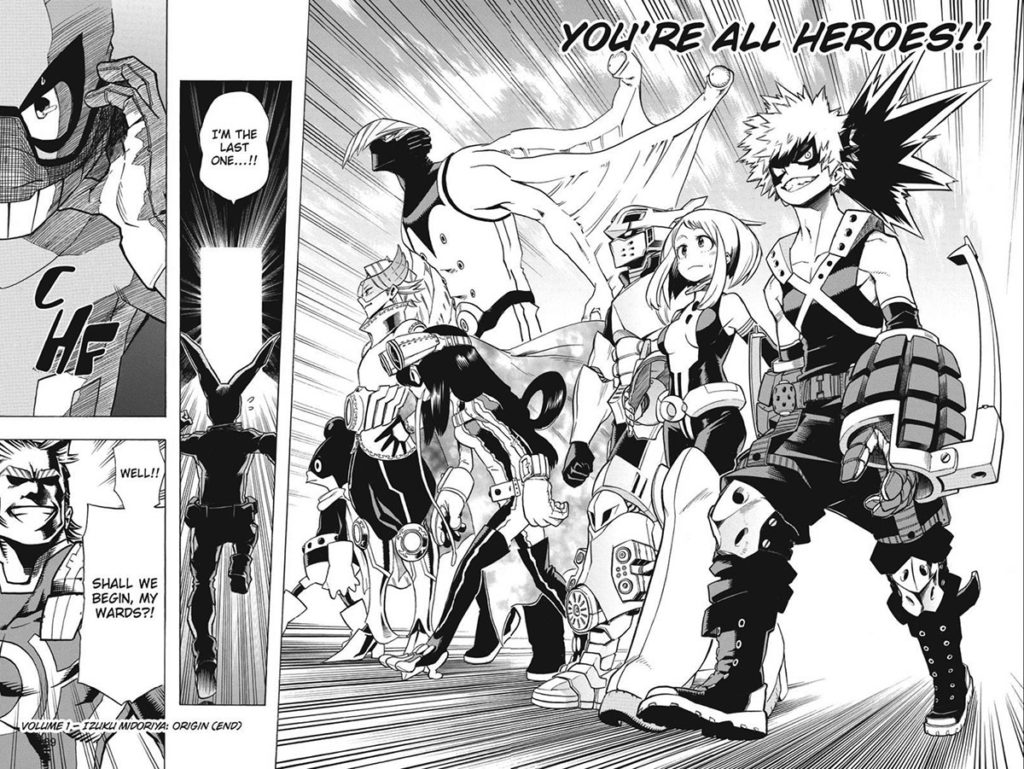
23:20 Nitroglycerin sweat is Bakugo’s power, which he uses those big gloves to launch at people.
As for Marvel characters, there’s the character NITRO, who was experimented on by aliens and gained the ability to explode and reform himself from a gaseous form at will, which is similar, but not exactly the same. I think there’s some pretty unique abilities in these superhero characters for sure, though they’re very-much in the vein of powers that will be familiar to Western superhero fans.
23:30 Face hands dude, aka Tomura Shigaraki, is one of the truly terrifying characters in My Hero Academia. This image of him from volume 2 almost looks pulled from an entirely different manga.

Here’s a better look at his actual character design:

26:24 Chip is more into josei manga, citing our very successful suggestions that he check out Even Though We’re Adults and Tokyo Tarareba Girls. We should probably come back around and recommend him another josei sometime soon…? River’s Edge is coming out this fall. Hmm.
27:13 Here’s a bit of fanservice from My Hero Academia, as a treat.

[Deb:] Got this tweet from Big Bang Comics in Dublin (Ireland) that brings up a good point, that the fanservice that can look mild-mannered to manga fans can be… well, not parent-friendly.
30:50 Speaking of fun hero designs, here’s the hero with tape in their elbows that Deb mentions, codename Cellophane.

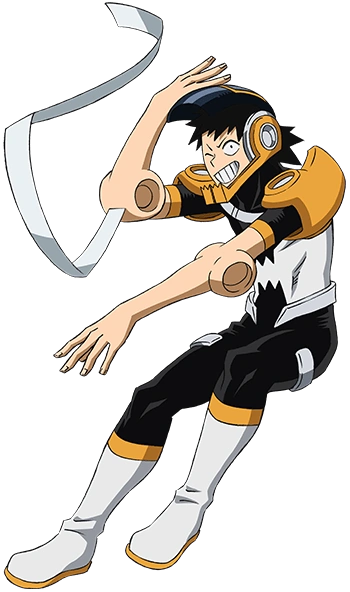
31:08 Mineta is gross, I think we all agree. He gets some character development later on that’s meant to redeem him a little, but like Bakugo (who keeps trying to murder his classmates and should definitely be in jail) I think he’s pretty much irredeemable. Other folks may disagree.

33:15: The second bestselling comic in France in 2021 was, in fact, Naruto Volume 1, being beat only by the new volume of long-running French classic Asterix. In fact it was the ninth best-selling book OVERALL in France that year. Wow. Book #3 was the brand new series Demon Slayer, and then book #4 was… Naruto again! Naruto Volume 2. These series, are, in fact, generational now. New generations will be discovering them more-or-less forever, until the style gets too ‘old’ looking to enjoy. Even then, people are still buying 1980s / 1990s hits like Dragonball and AKIRA, because the work is just so strong. I think, barring catastrophe, manga really is here to stay.
Oh, and My Hero Academia Volume 1 was the ninth bestselling comic of the year in France, so still not too shabby. I guess they just don’t like superheroes as much. 😉
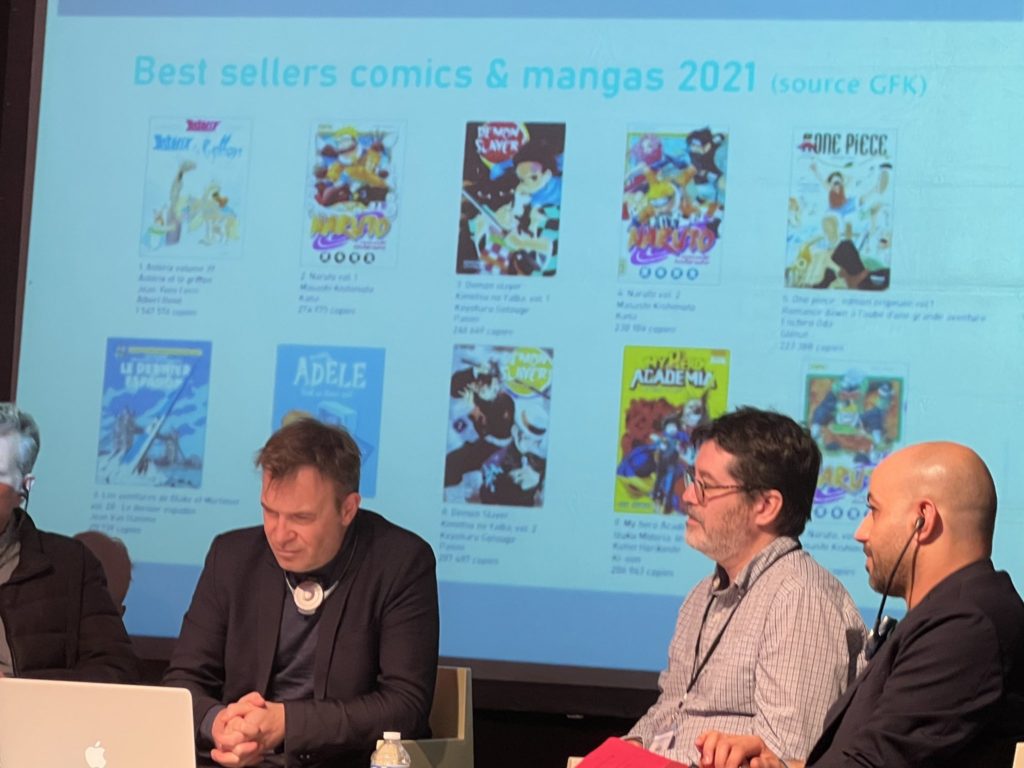
34:30 Variant covers, spin-off series…. It’s a superhero comic series after all!
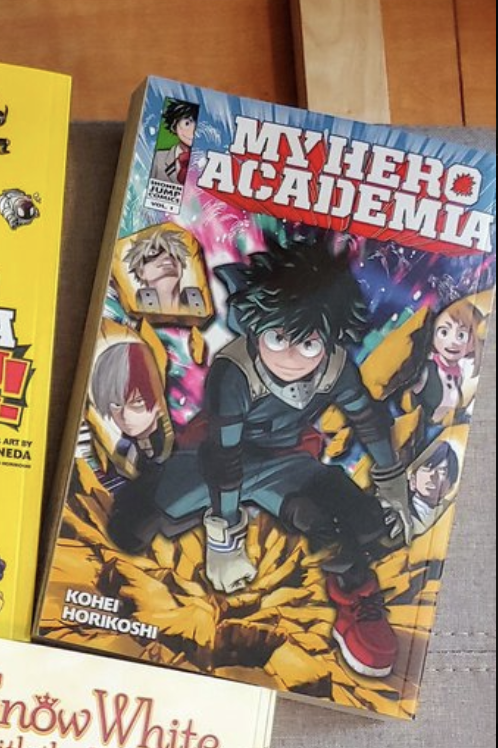
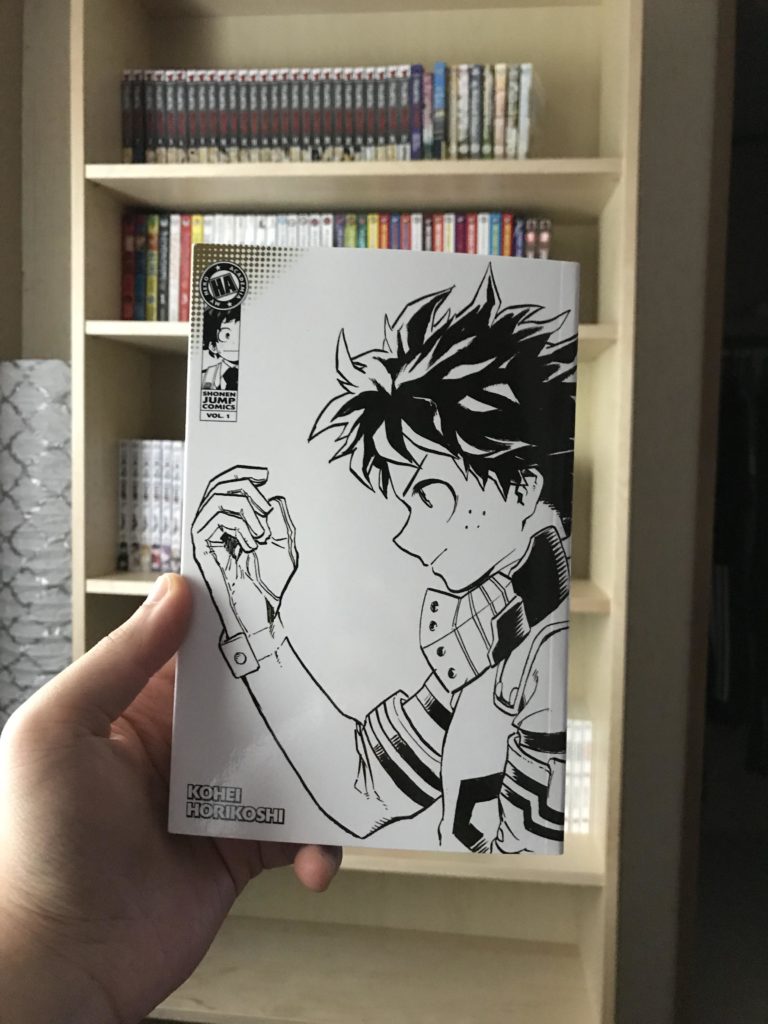
I stole those images from the internet, of the ‘official’ variants of volume 1 in English. Sorry if they’re your images or that’s your hand, I’ll take it down if you drop us a line.
Speaking of which, France actually had a My Hero Academia variant cover with exclusive art by DC Comics’s Jorge Jimenez, AKA THE ARTIST ON CHIP’S BATMAN SERIES.
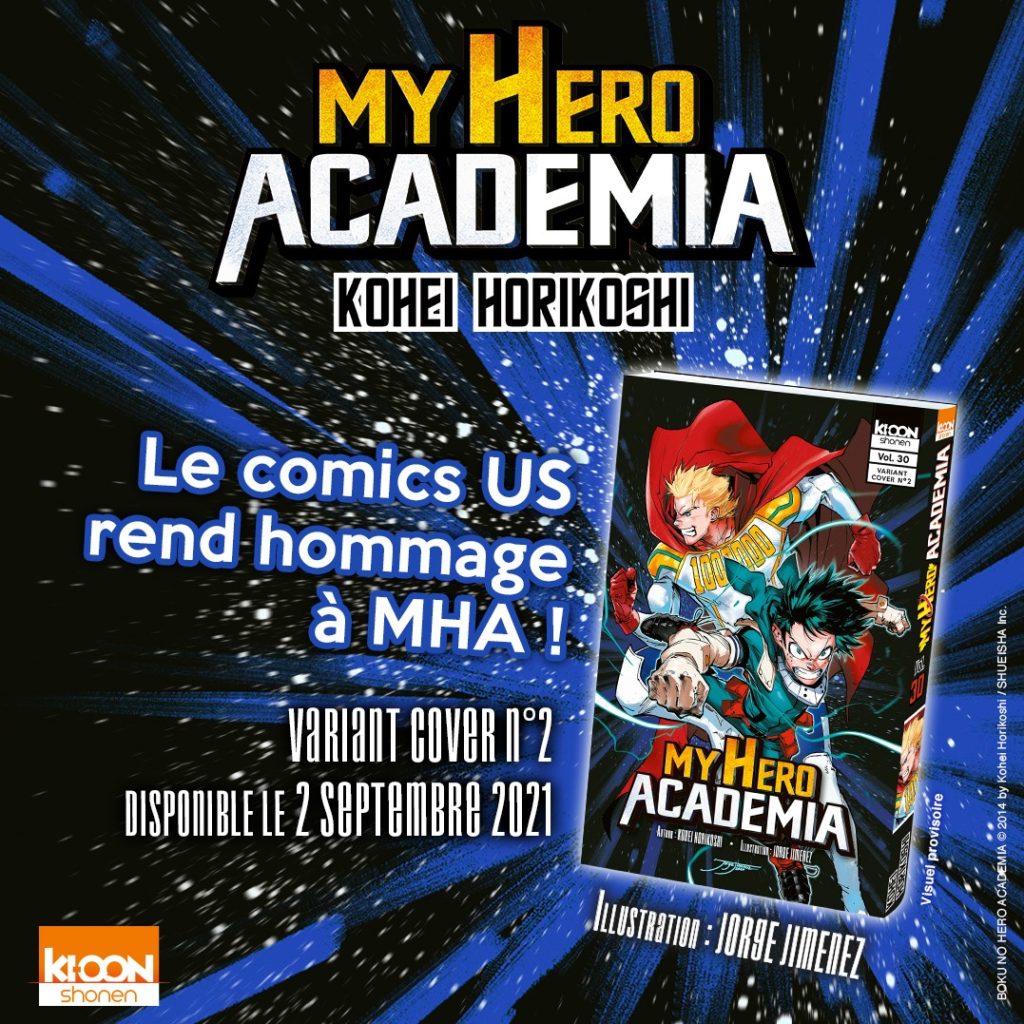
I can’t believe I didn’t know this ahead of time so I coulda busted it out on Chip during the podcast…!
It goes both ways too, Horikoshi is a big fan of manga and comics, and is known to have done fan art for many series. Here’s a recent illustration of Komi, from the series Komi Can’t Communicate which is currently being released from VIZ.
And here’s a whole twitter thread of old fanart by Horikoshi, for series as diverse as The Avengers, Dragonball, Splatoon, and so many more:
[Deb:] There are so many great examples of this reciprocal appreciation between Kohei Horikoshi / My Hero Academia and N. American superhero comic artists that I just had to include a few more:
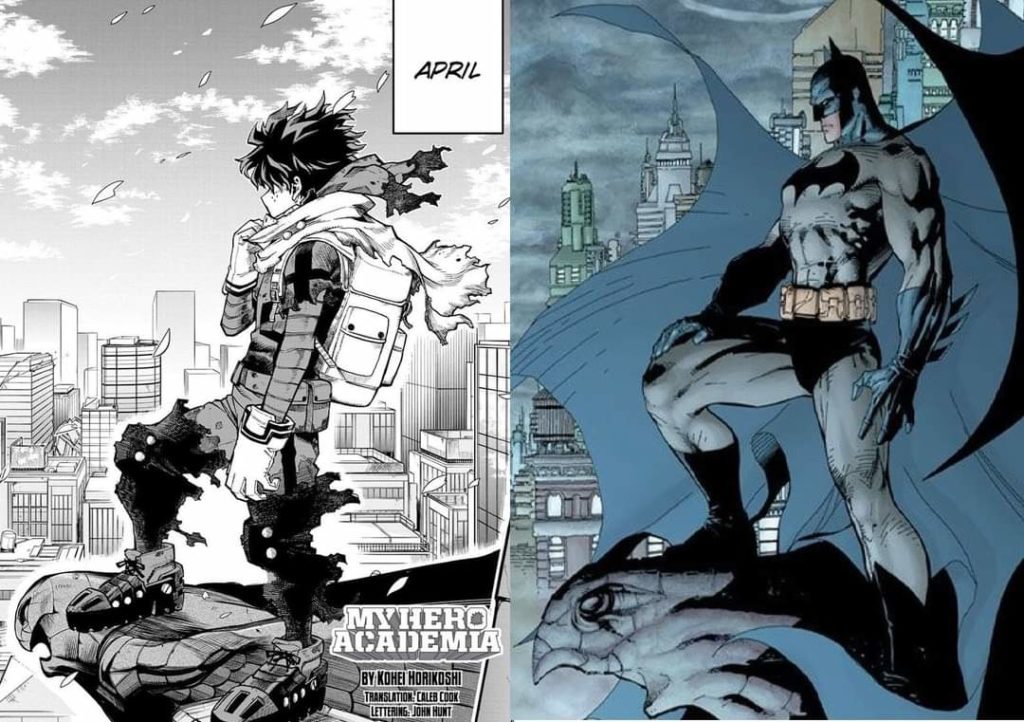
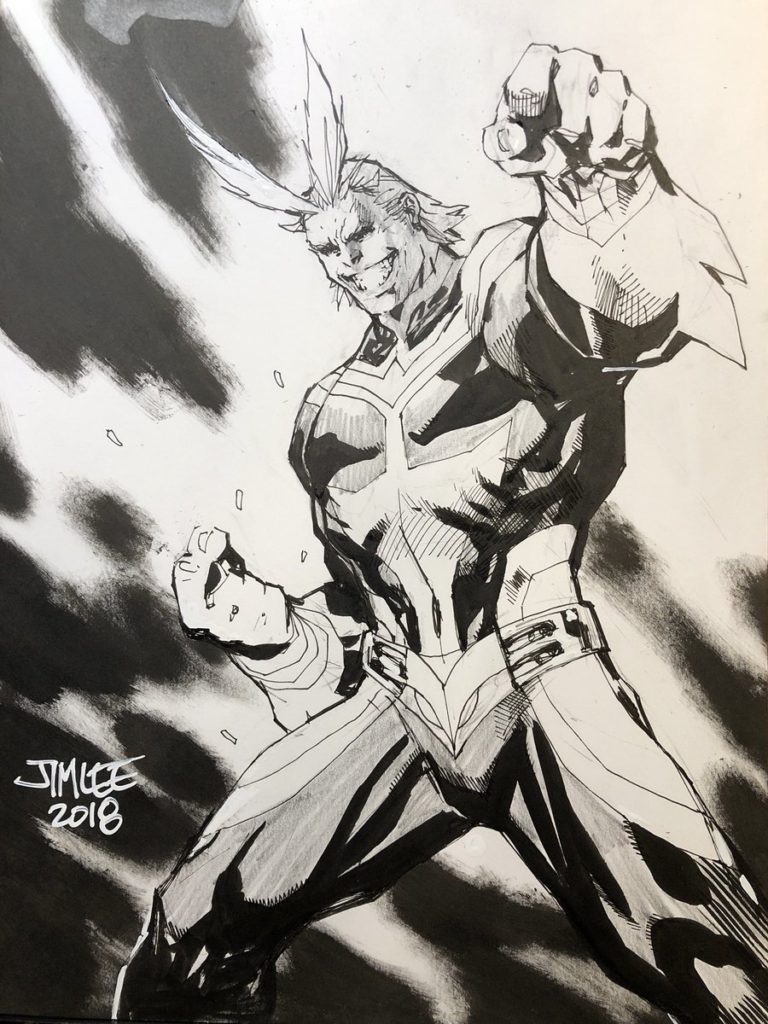
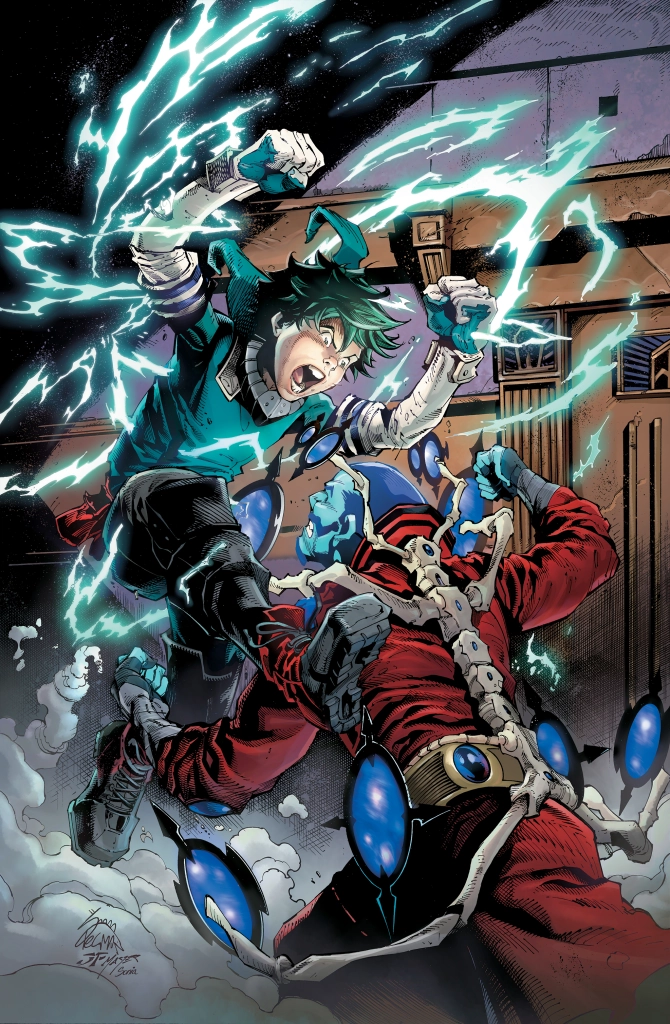
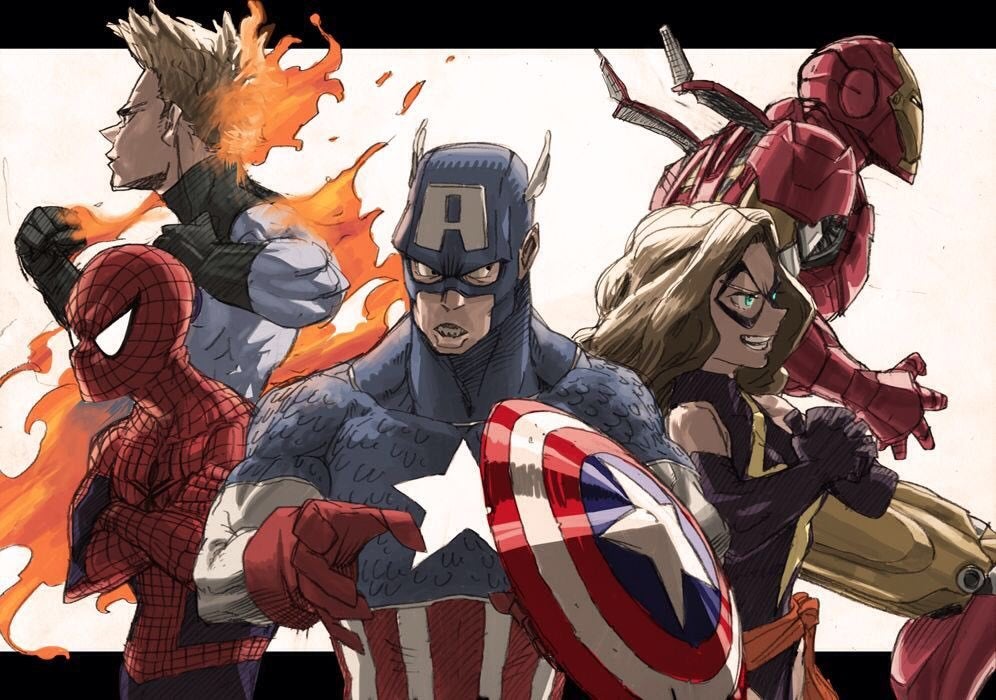
38:10 The anime is HUGE. When I suggested this book, in the back of my mind I thought about ALSO recommending we all check out the first episode of the anime too, to see how they compare… But maybe we’ll save that setup for a future episode of the podcast. My Hero Academia is on Crunchyroll and without a subscription it’s tough to watch. However, we all have Netflix, so maybe we’ll choose something for that.
[Deb:] My Hero Academia is also streaming on Hulu.
The reason I wanted to compare the manga and the anime, is because it’s undeniable that the anime plays a large part in the chart-topping success of this series. Like, no shade, it’s a great manga series, and was doing VERY well before the anime released… But the anime moved it from being a best-seller to THE bestseller. The connection between the success of manga and a corresponding anime cannot be understated, and no matter how good or how well the book is selling, when the anime comes
39:30 David mentions this page from volume 6, with no spoilers, of Gran Torino, an old man superhero moving so quickly that he even outruns his word bubble, and that’s a great visual trick.

…and then Chip mentions another cool visual thing related to lettering, and that’s Deku’s habit of muttering to himself while talking about superhero-y things, and his word balloons being made up of the word “mutter.” It’s such a cool visual gag.

Then there’s All Might’s VERY superhero-y way of announcing what he’s doing as he’s doing it, which leads to some pretty great jokes. There’s the “I’ve come through the door like normal,” from up top, as well as this call-back in a later volume:

43:50 I think this idea, about the comics you read growing up showing up in the comics you make as an adult, could easily be an entire essay, so I’m not going to go much more into it here than I have. But I think it’s a real thing. You can see it much more clearly in the work outside of superheroes, like the Scholastic and First Second graphic novels being made by younger creators.
I mention Bryan Lee O’Malley’s Scott Pilgrim because he’s my pal and it’s a successful example, but there’s a ton of younger creators out there who have also been internalizing many different styles of comics from around the world. It’s only going to get more interesting from here as more and more of this generation of comics creators get out there!
As another example, here’s a couple of graphic novel titles created in the ‘style’ of manga by European and N. American creators. A few of these, in my humble opinion, are indistinguishable from Japanese-originating manga. Some are much more obviously created outside of Japan, but I think it’s pretty fascinating to see just how ‘close’ it’s getting.
[Deb:] Two of the books Chris picked below, Devil’s Candy by rem and Bikkuri and Fangirl by Rainbow Rowell, Sam Maggs and Gabi Nam are part of VIZ Media’s VIZ Originals imprint. Radiant by Tony Valente is also available in English from VIZ Media AND has an animated series adaptation too.
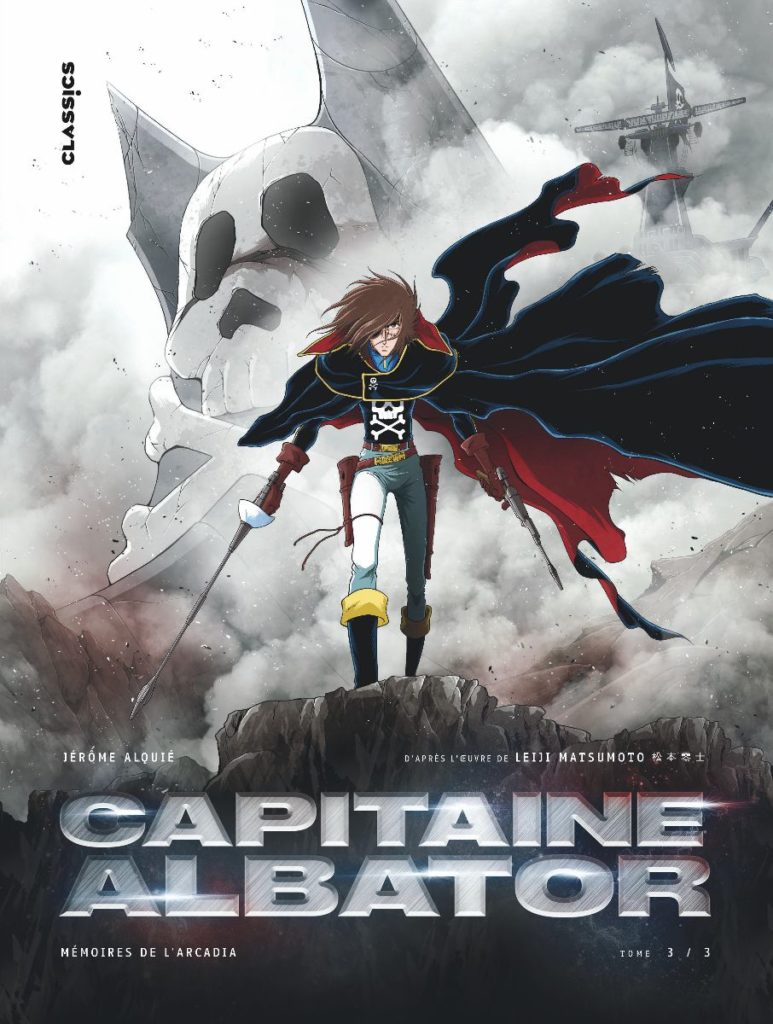
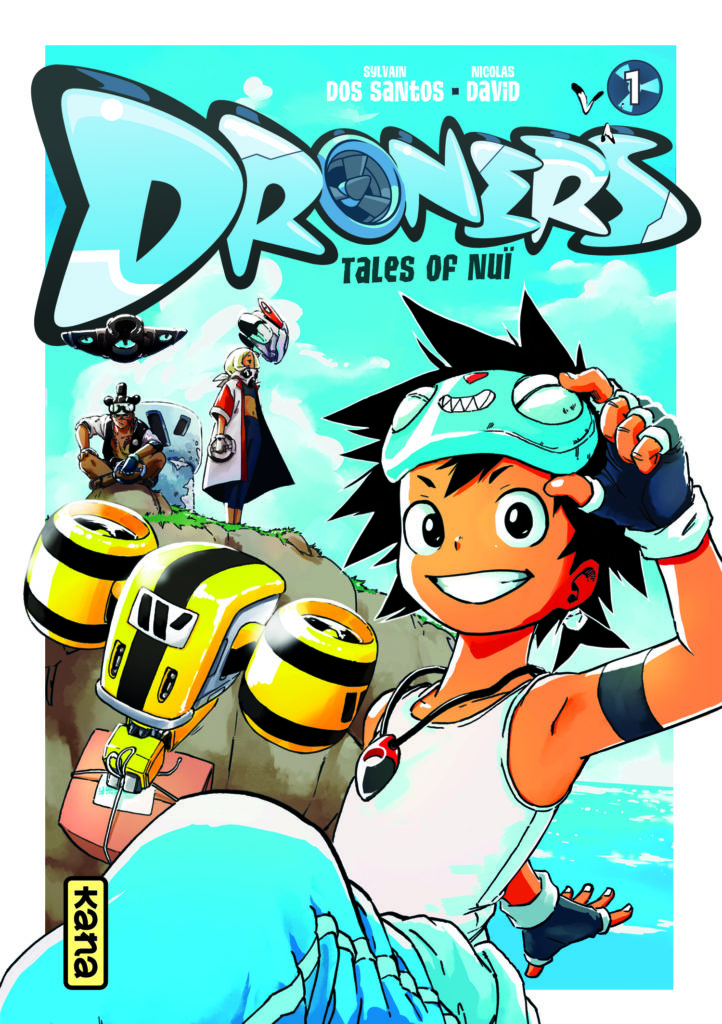
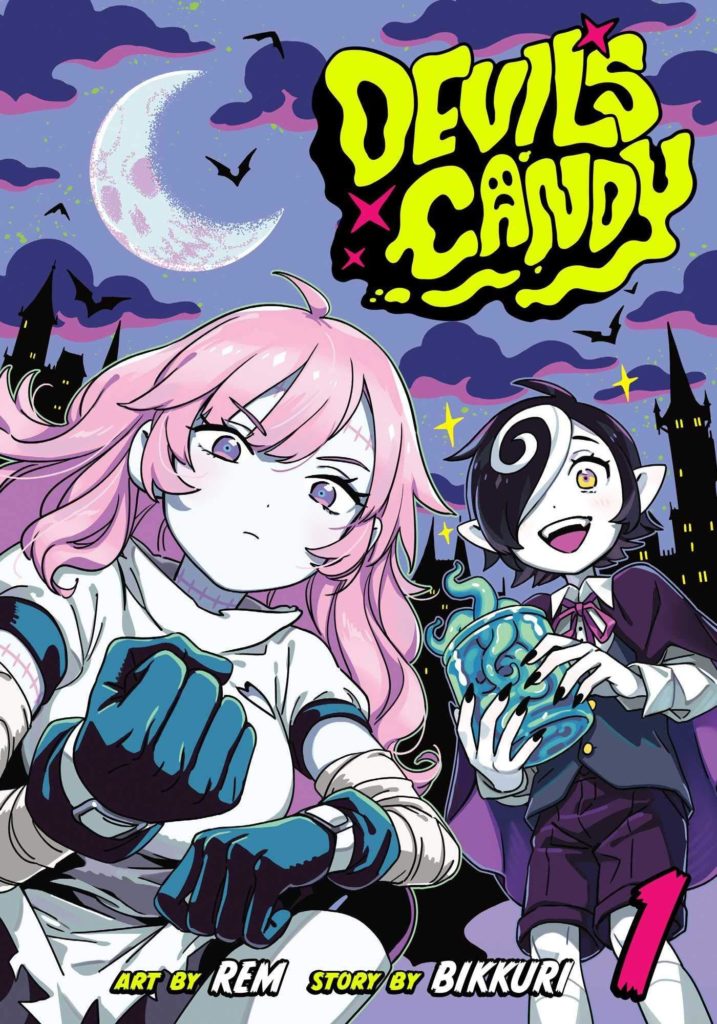
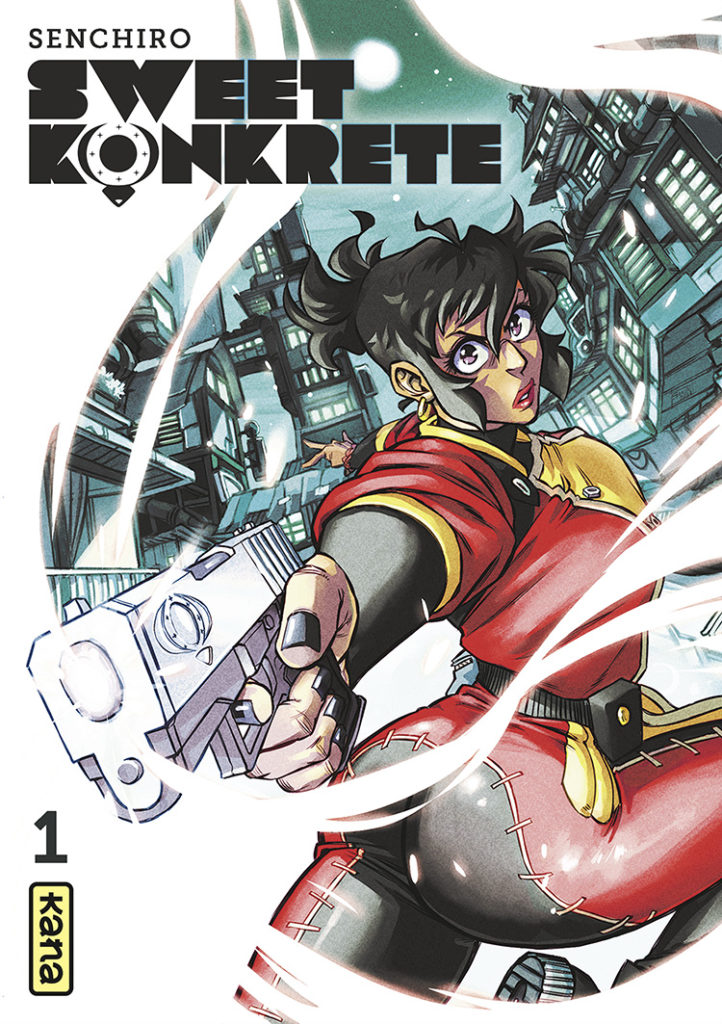
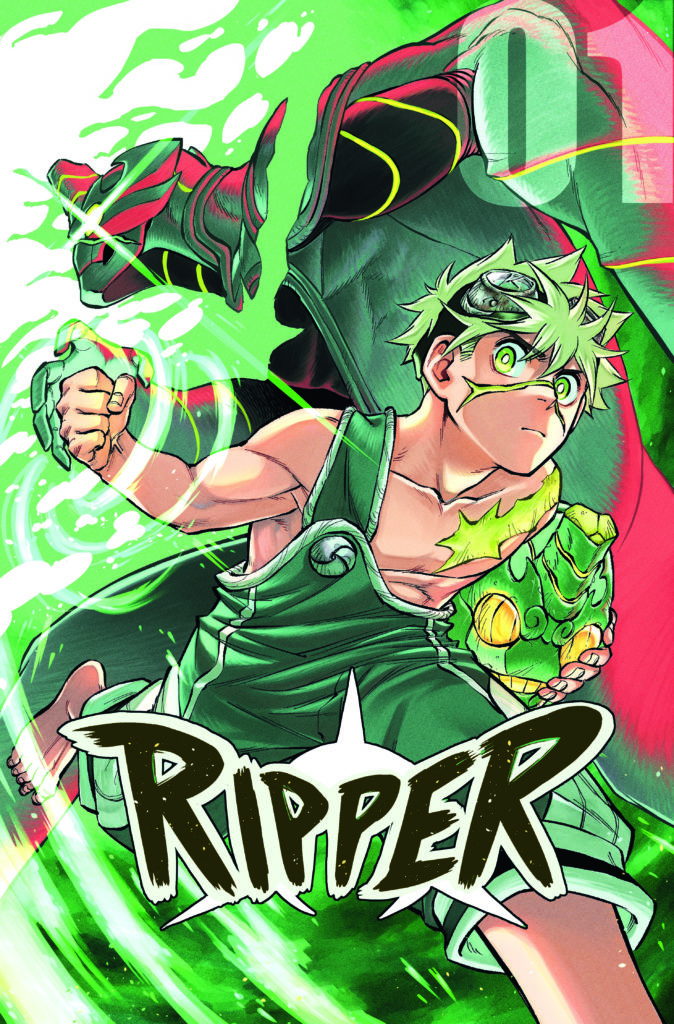
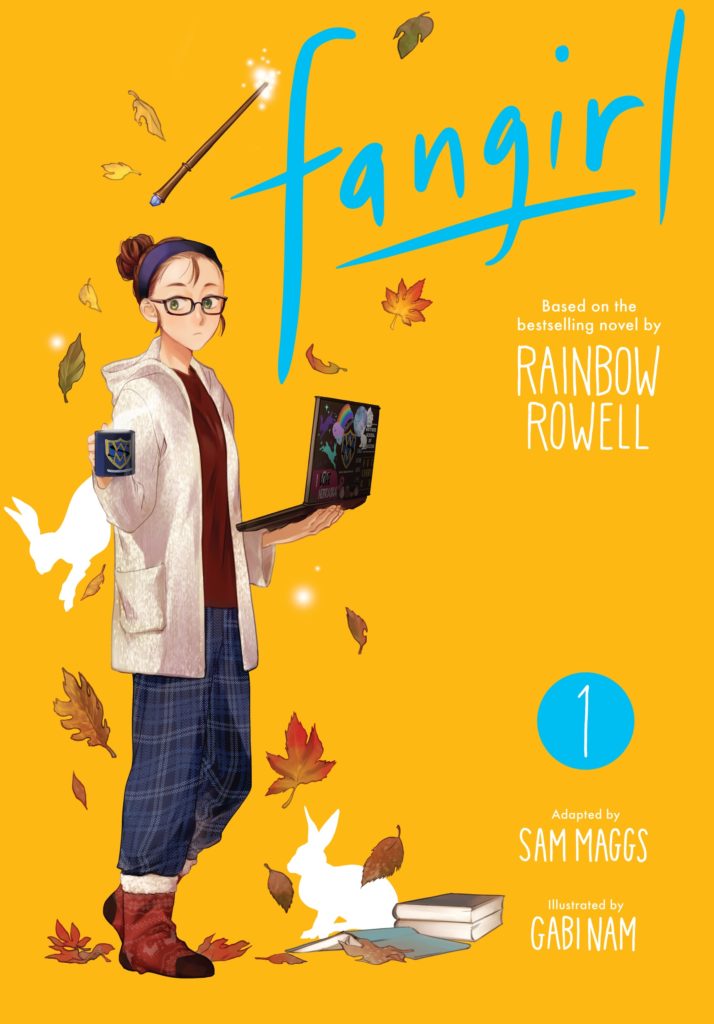
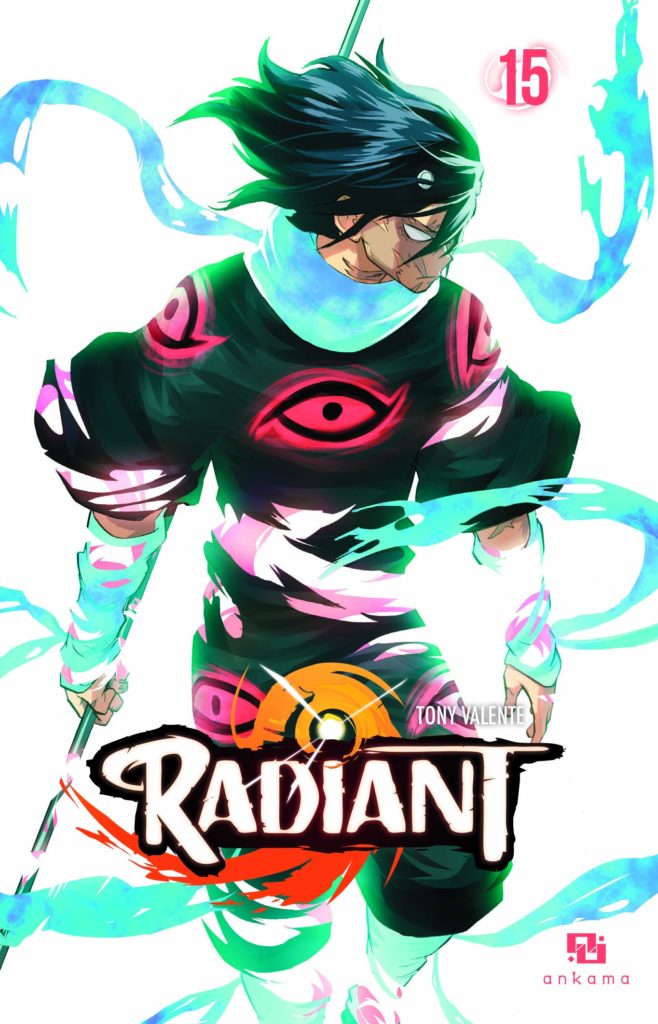
46:00 I firmly believe we will never get a chance to interview Kohei Horikoshi on the podcast, and also, I will work very hard to try and make it happen. Thank you for your support.
47:10 We talked about Slam Dunk in the show notes before. Here’s what we said then:
David mentions the manga Slam Dunk by Takehiko Inoue, a basketball manga (THE Basketball manga) that ran in Weekly Shonen Jump from 1990-1996. It is credited, no lie, with introducing basketball to Japan and popularizing it among the youth of the country. It is a truly beloved series. I gotta be honest, I bounced really hard off of this series for first 2 or 3 volumes. It’s more of a 1990s-style Shonen Jump comedy with a high school basketball team setting, but Inoue-sensei really comes into his own over the course of the series. I actually picked up a random volume from later in the series to see what I was missing and the tone changes quite a bit 10 or 15 volumes in. Maybe one day I’ll put it back on my re-read list.
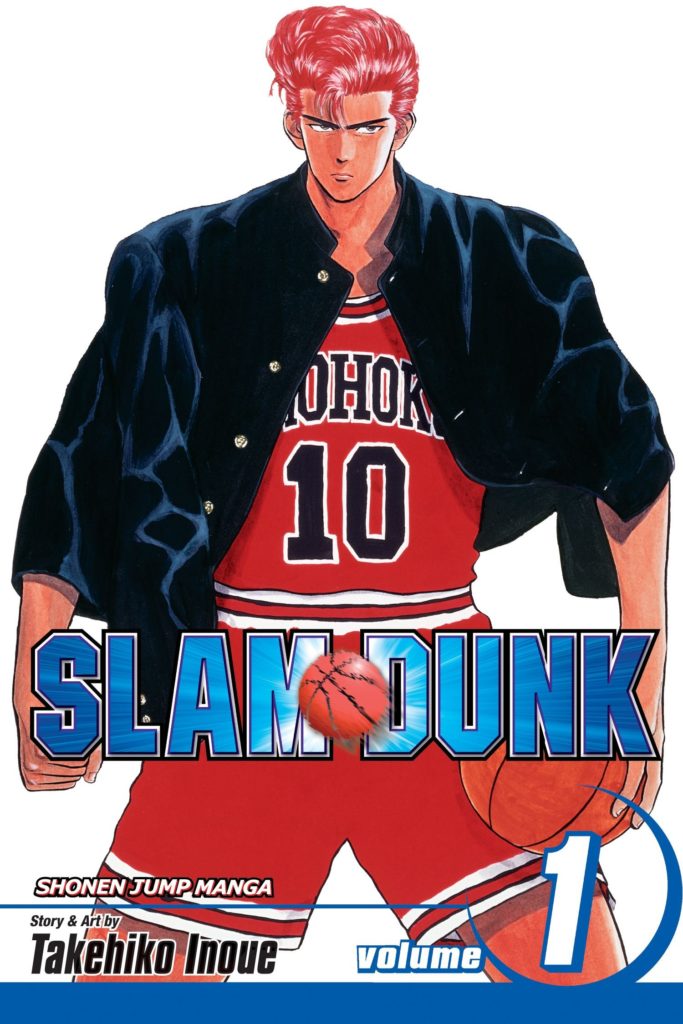
Since we’re unlikely to cover this manga on the podcast, let me share this little factoid here: Slam Dunk has a REALLY interesting publishing history in North America, that’s largely lost to time. In short, Inoue-sensei pulled back all of the publishing rights to Slam Dunk in Japan, along with a few of his contemporary manga-ka who were similarly huge sellers for Shonen Jump in the 1990s, like Tetsuo Hara (Fist of the North Star) and Tsukasa Hojo (City Hunter). They controlled their publishing rights directly, some licensed back to JUMP in Japan and some became the foundation for a new company, Coamix, but most importantly to you and I, they decided to publish their genre-defining works directly in English, starting the new company Gutsoon!, and weekly manga magazine Raijin Comics.
[Deb:] This venture was led by Nobuhiko Horie, who was the former editor-in-chief of Weekly Shonen Jump during this “golden age of Jump.” Coamix is the publishing home for manga by Tetsuo Hara and Tsukasa Hojo, through its online and print publications, including Monthly Comic Zenon. Coamix also runs a contest for aspiring global comics creators called Silent Manga Audition, which includes a website that’s chock full of fascinating videos about manga, with many subtitled in English.
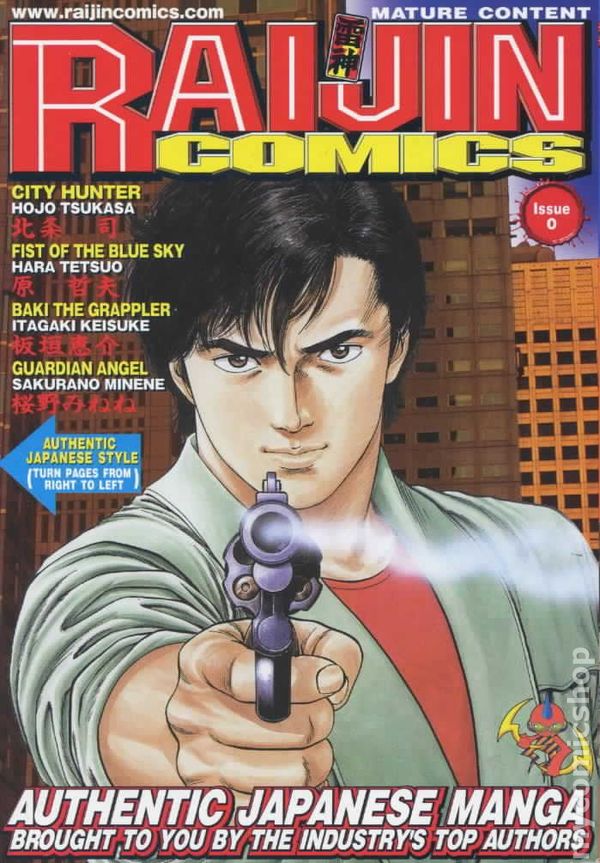
[Christopher:] One day I’ll write a whole essay about my feelings about Raijin Comics, but the short version is that the first five volumes of Slam Dunk appeared in English from Raijin from 2003-2004, and they were one of many companies that kickstarted the first manga boom (and maybe contributed to the manga bust that followed). Like many companies around that time, they made a huge splash and went under pretty quick. 36 weekly issues and 10 monthly issues of the magazine were published before the publisher folded in North America.
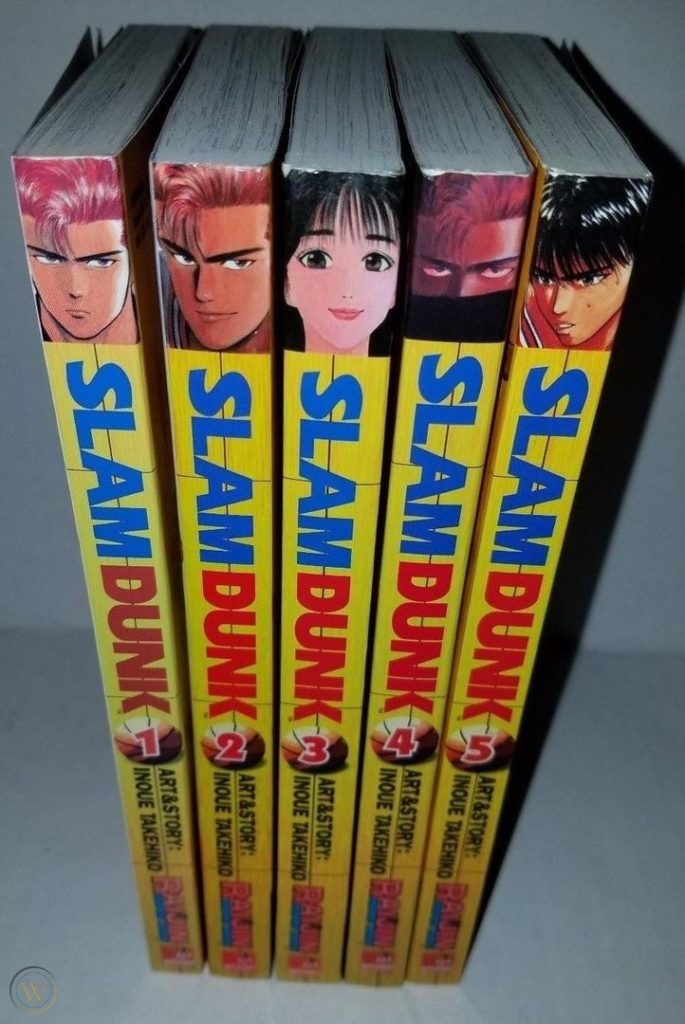
After Raijin Comics ceased publication, VIZ licensed the rights to Slam Dunk and began publishing it as part of Shonen Jump magazine, the title’s original Japanese home, in 2007. VIZ published all 31 volumes, once upon a time, but as of right now it looks like every volume is completely out of print, and is not available digitally. Looks like Inoue-sensei still has a firm handle on those publishing rights, and isn’t interested in digital editions of this work yet. Still, given what seems to be a successful publication of Fist of the North Star from VIZ, maybe a new edition of Slam Dunk could make its way to North America some day.
[Deb:] Real is available digitally, but his other series, Vagabond and Slam Dunk are not, or at least not yet. I’m hoping that the upcoming Slam Dunk movie (which is in the works now) will rekindle interest in this manga series and maybe inspire new editions of this manga (including maybe a digital release), so new readers can discover how cool it is. We also *really* need to talk about sports manga in Season 3!
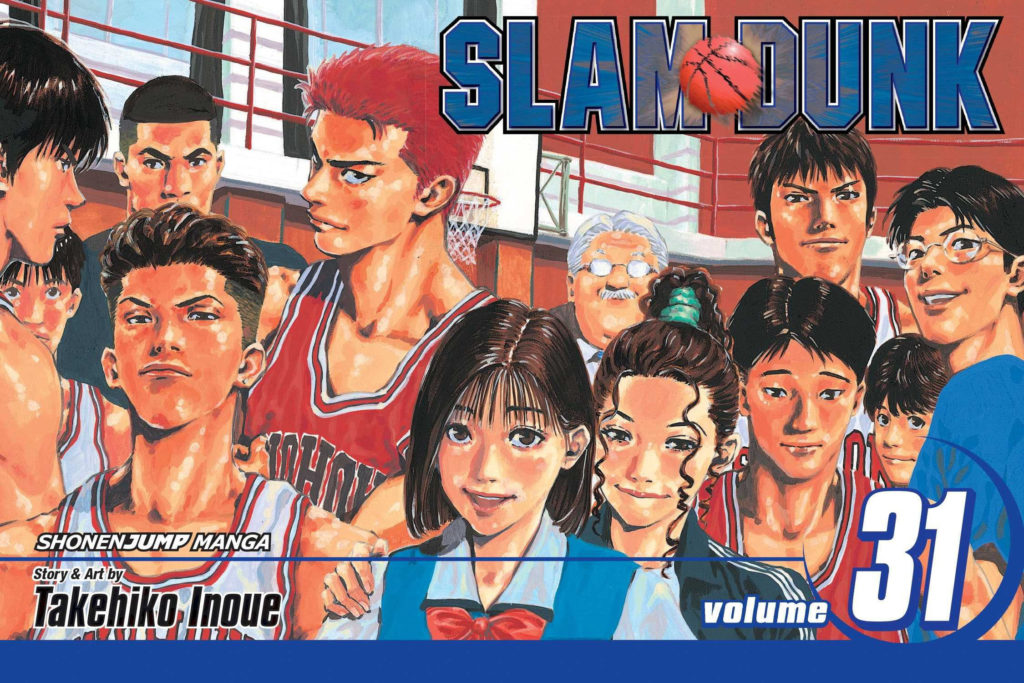
48:30 UNPRECEDENTED! We’re taking a mid-episode break to read MORE DIFFERENT COMICS! We didn’t even insert an ad!
This was totally real by the way! As the podcast has gone on, we’ve started to notice certain trends. I realized we were maybe going down a not-great-path, discussion-wise, by judging the totality of the art in My Hero Academia by just the art in the first volume. 35 volumes, 300+ chapters, 7000+ pages later, the series is in a very, very different place. I’m glad we did this, David has really been inspiring me to push some of how we’re doing this differently, and I think it makes for better episodes… What do you think?
49:00 So the chapter we read is My Hero Academia Chapter 355, and I read the rest after. The artwork is, honestly, next level.
SPOILERS FOR My Hero Academia CHAPTER 355-59
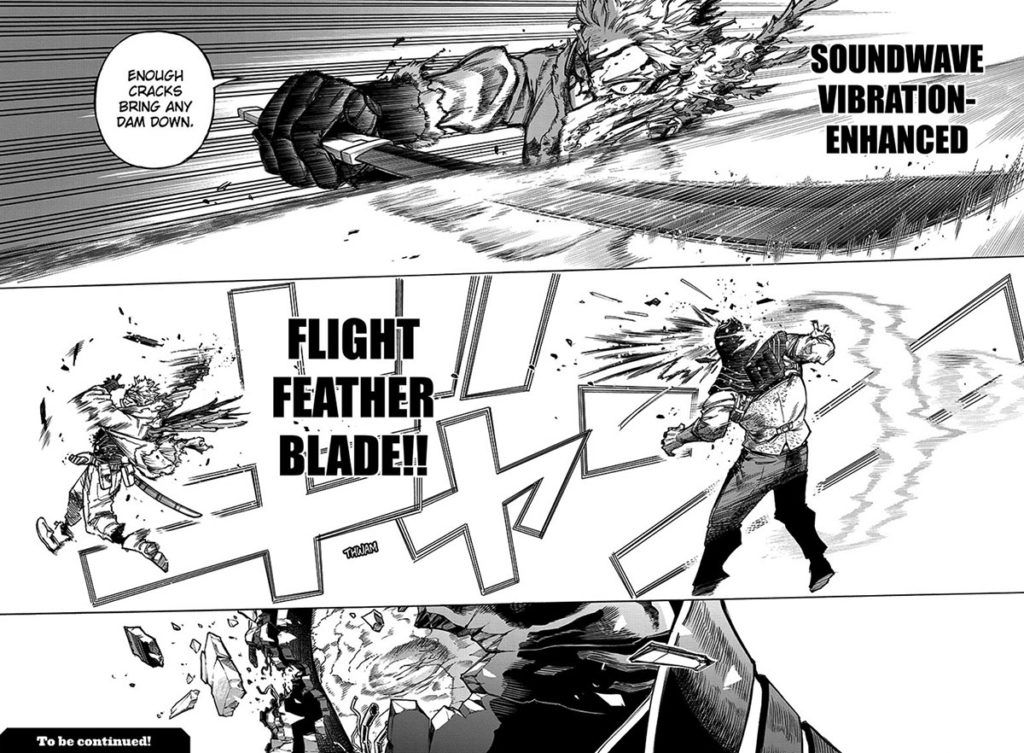

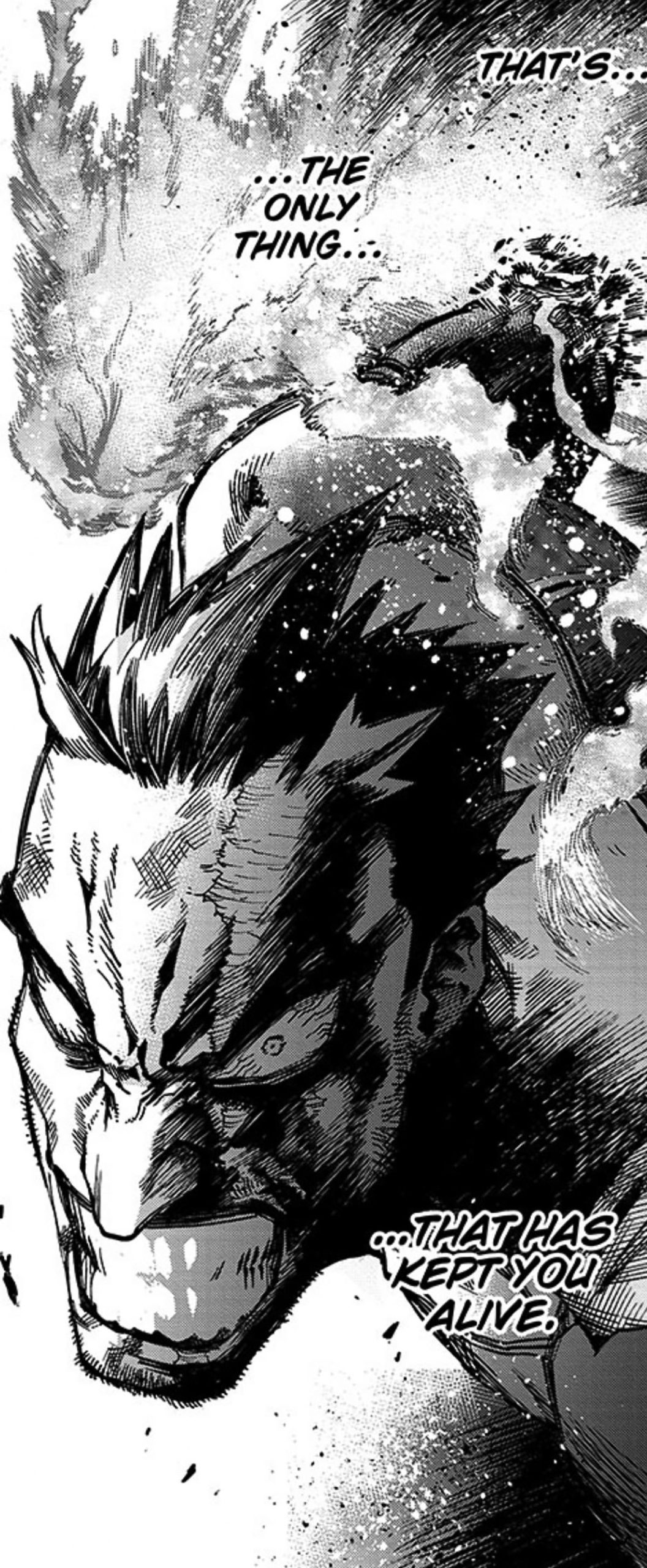
51:50 David calls out all of the chapter-break ‘extras’ in the book editions (not a part of the weekly chapters), which include sketches and drawings of the characters in casual clothes, fancy clothes, winter clothing, etc. It’s actually pretty cool.

53:28 I… do not believe that Chip likes the bonus material, in general. Heh. It’s been 70 episodes. Deb actually calls him out, accidentally (because Deb is far too nice to do it on purpose) in the upcoming Witchcraft Works episode and it was such perfect vindication for this segment.
54:50 I like the backgrounds in the first chapter, and Deb likes the Clayface-style character, being a pretty interesting take on a mud monster.
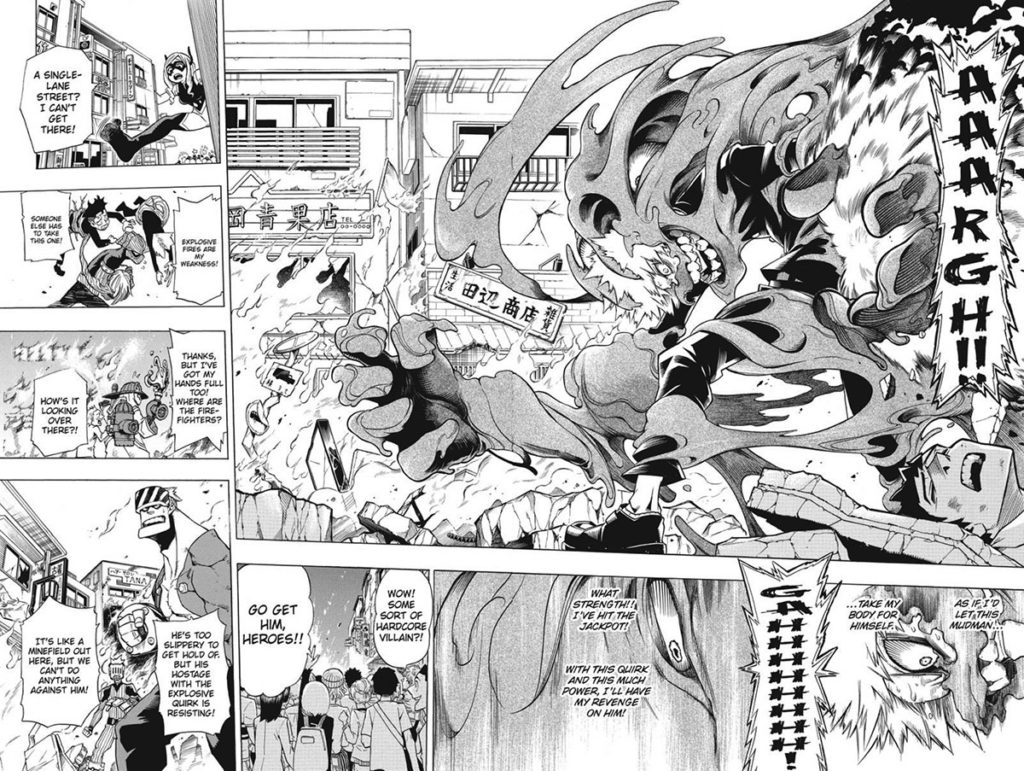
And here it is, the very HEIGHT of shonen battle manga. A screaming, crying dude, throwing himself at the enemy, saying “You’re the one who made my pals cry!” From Chapter 355.

58:20 Here’s the introductory note from the author at the beginning of this manga, it’s definitely funny in retrospect, but as we covered above, this is a dude who had his last two series cancelled prematurely, and how much anxiety he must have had around it. Luckily for us, it all worked out well.

58:44 Actually, they don’t generally update artist comments in manga, but when they go back and do special editions for the very biggest titles, they do get new author comments, and add to the existing author comments. I can’t really think of an example unfortunately, but I do know I’ve seen it in various manga.
1:00:30 Let’s go out on Deku’s mom being great, which is true.
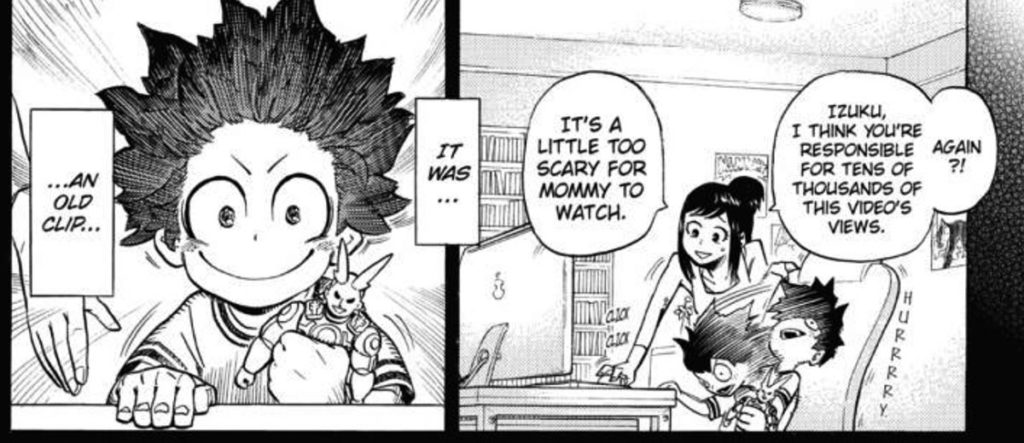
She shows up again for a sequence in volume 5 as the most supportive, caring, worried, wonderful kind of mom. It’s such an amazing moment! But I’m not gonna show that here, instead here’s a meme that got out of control that features young Deku and his mom.
1:01:11: THE BREAK! THE REAL ONE THIS TIME! And hey since we’re advertising anyway, have you checked out our Publishing endeavour and newsletter, Mangasplaining Extra? We just announced a new manga project, it’s exciting! Go check it out.
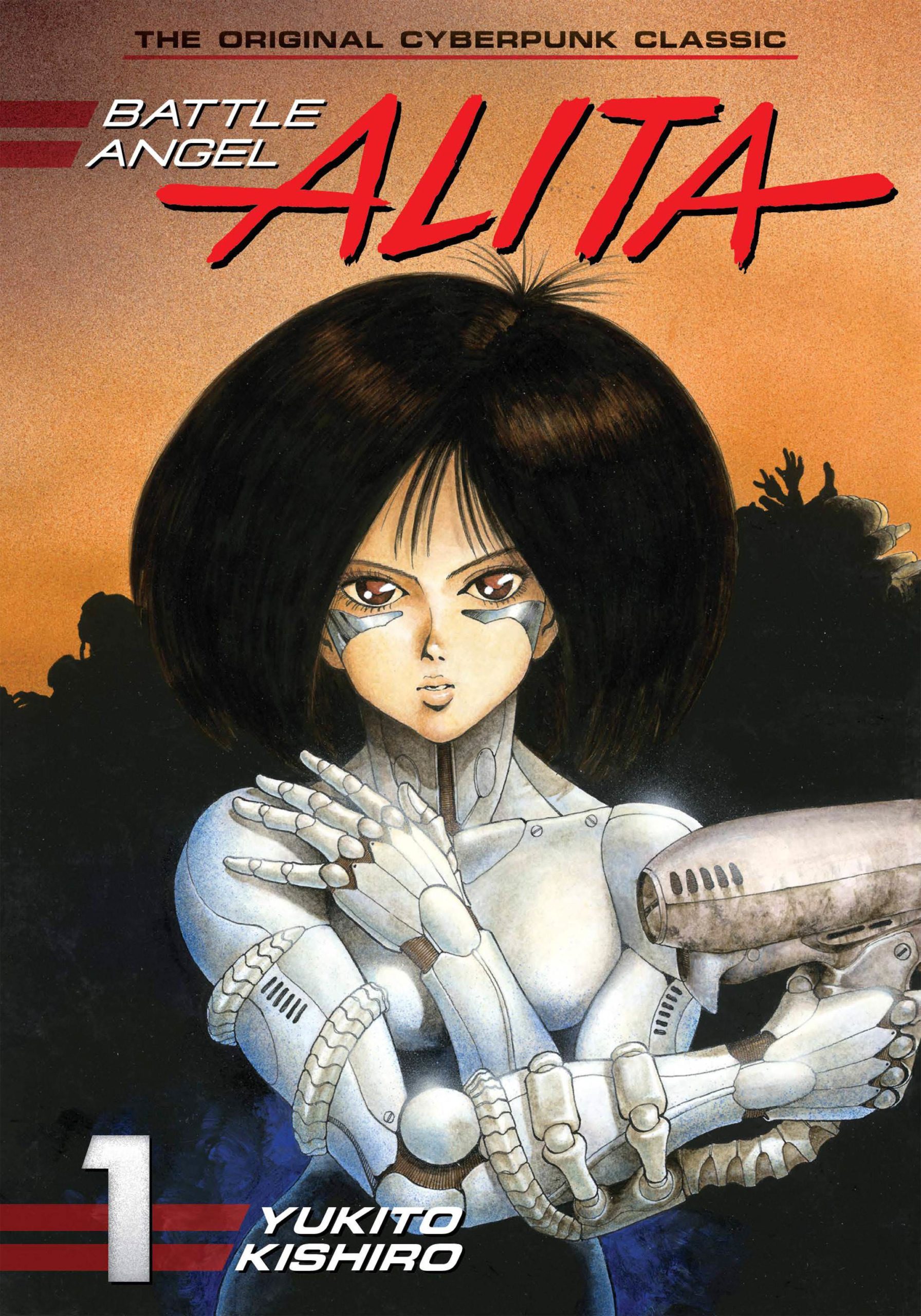
ComiXology Manga Must Reads:
Battle Angel Alita Volume 1
By Yukito Kishirio
Translation by Stephen Paul
Lettering by Scott Brown
Published by Kodansha (Print/Digital)
Check out Battle Angel Alita on ComiXology. If you’re new to ComiXology Unlimited, give it a try with a 30-day free trial.
CW: The images and videos in this section depict very violent sequences, including violence against women. Heads-up!
1:02:00 Here’s what Battle Angel Alita is all about:
In a dump in the lawless settlement of Scrapyard, far beneath the mysterious space city of Zalem, disgraced cyber-doctor Daisuke Ido makes a strange find: the detached head of a cyborg woman who has lost all her memories. He names her Alita and equips her with a powerful new body, the Berserker. While Alita remembers no details of her former life, a moment of desperation reawakens in her nerves the legendary school of martial arts known as Panzer Kunst. In a place where there is no justice but what people make for themselves, Alita decides to become a hunter-killer, tracking down and taking out those who prey on the weak. But can she hold onto her humanity as she begins to revel in her own bloodlust?
Kodansha USA
1:02:28 Battle Angel Alita is a cyberpunk classic. It’s a deeply influential work that changed everyone who read it, particularly comics creators like Rob Liefeld and Jim Lee, among many other creators. Interestingly, this manga was originally published as part of the JUMP family of books, before Kishiro went through some heavy life stuff, put the series on hiatus, then restarted it a few years later with Kodansha.
I think I’ve seen this particular image from Battle Angel Alita, which kicks off volume 1, ripped off dozens of times during the 1990s and 2000s.

But while it was part of the JUMP family, it was actually in Business Jump, a magazine that was emblematic of bubble-era Japan. It was published between 1985 and 2011 as a “salaryman” manga, aimed at one age-bracket older than seinen manga (which is generally aimed at readers in their 20s-30s). This might account for the much greater amount of violence and sexuality in this one. As far as I can tell, the only other manga from Business Jump translated into English is Jiro Taniguchi and Baku Yumemakura’s Summit of the Gods, published by Fanfare/Ponent Mon, which is a Very Manly Manga about mountain climbing.
Perhaps infamously, Business Jump also published the hyper-violent RIKI-OH manga, which was adapted into the much-beloved cult-classic marital arts gorefest RIKI-OH: The Story of Riki. Running 12 volumes of violent mayhem, it is both perfectly understandable why this has not been published in English and also a complete travesty.
1:04:38 Chip really doesn’t dig the cover (above), but does love the interior art. Chip is right that the caricature game is so strong in this one that some characters, like Ido, don’t even look like they’re from the same manga.
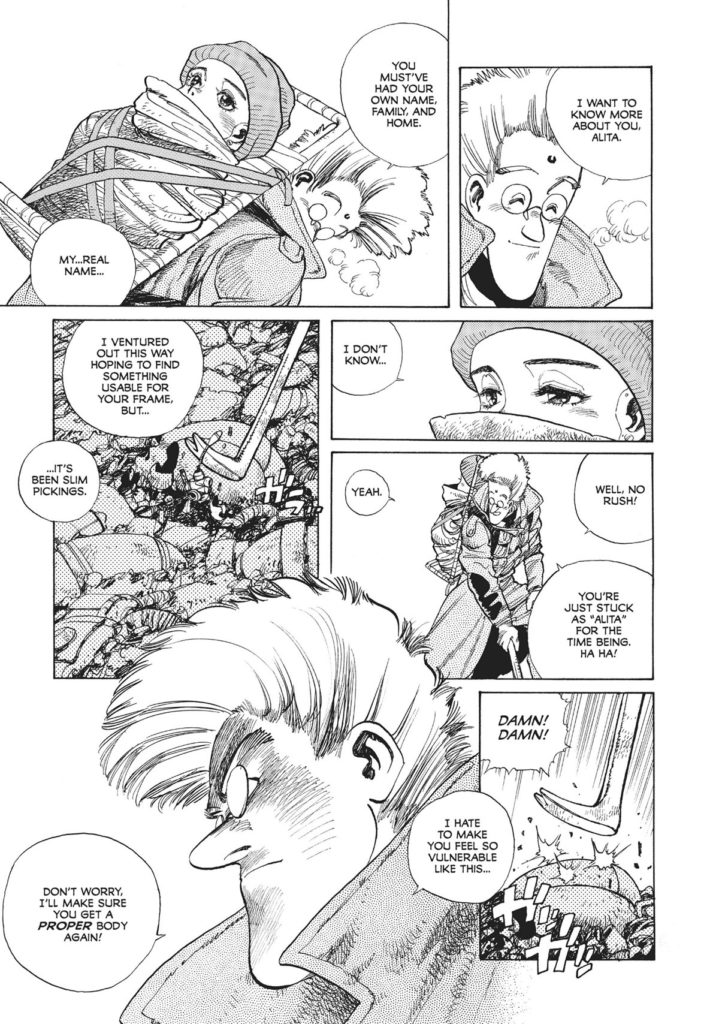
And Chip does love this sculpture of the sphere with man’s legs.
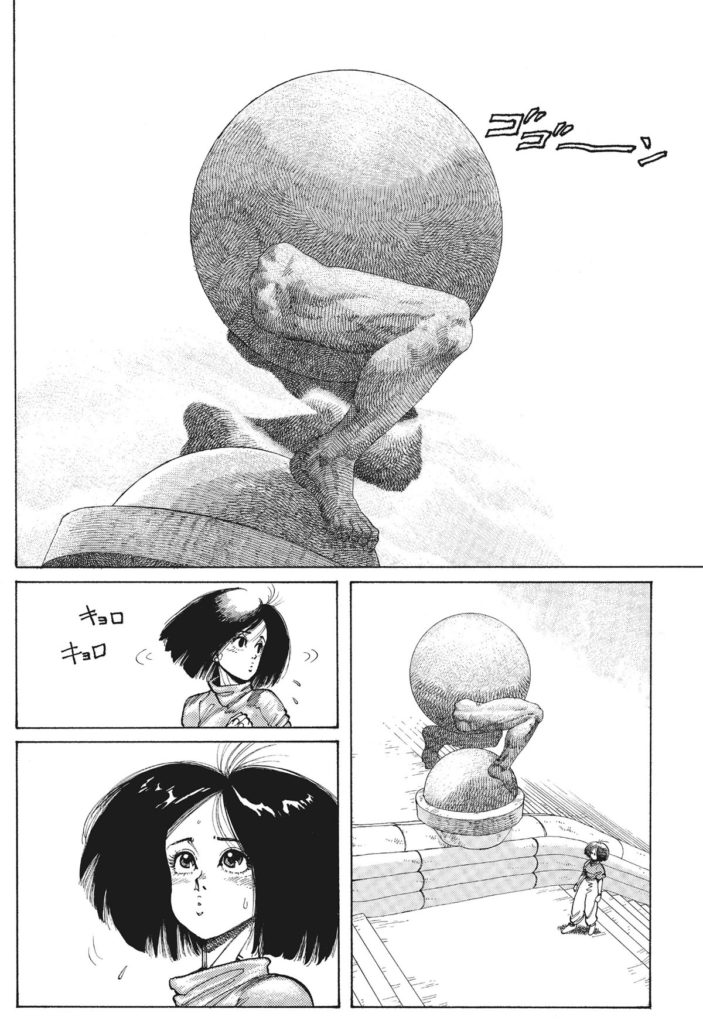
1:05:41 Meanwhile, in the 1990s, N. American comics had this thing where women characters were murdered to motivate other characters in their books. There are a million “Bad Girl” comics in the 1 990s that do riffs on the scene below. So many comics showing that a woman is strong by having something terrible to an ‘average’ woman. It’s just… Well, at least this one is from 30 years ago. (Reads right-to-left).
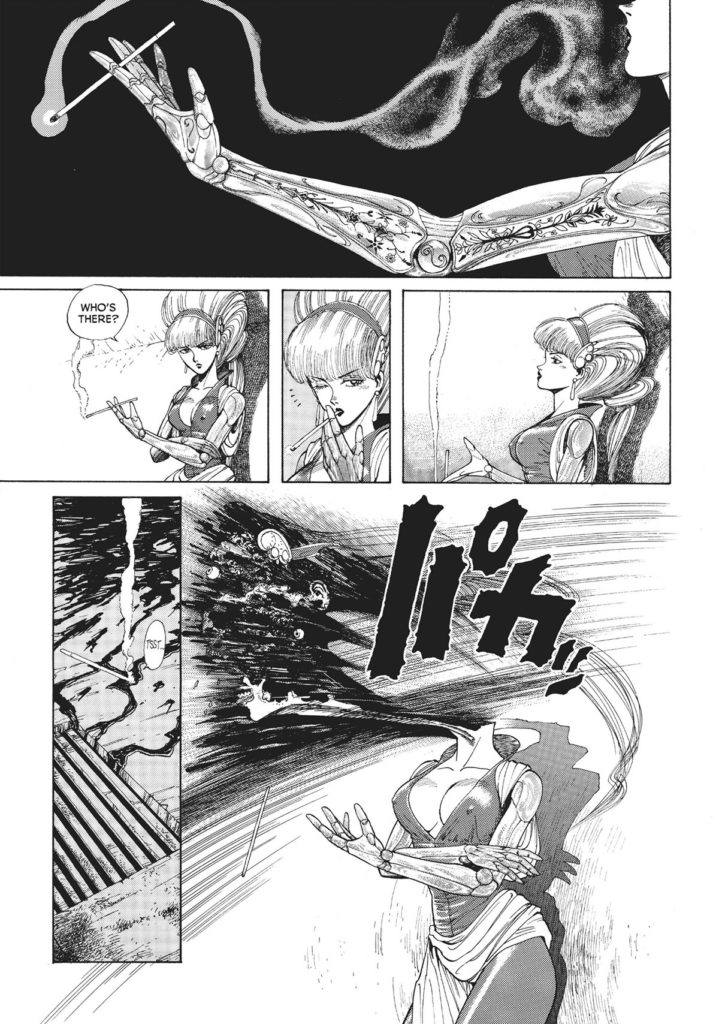
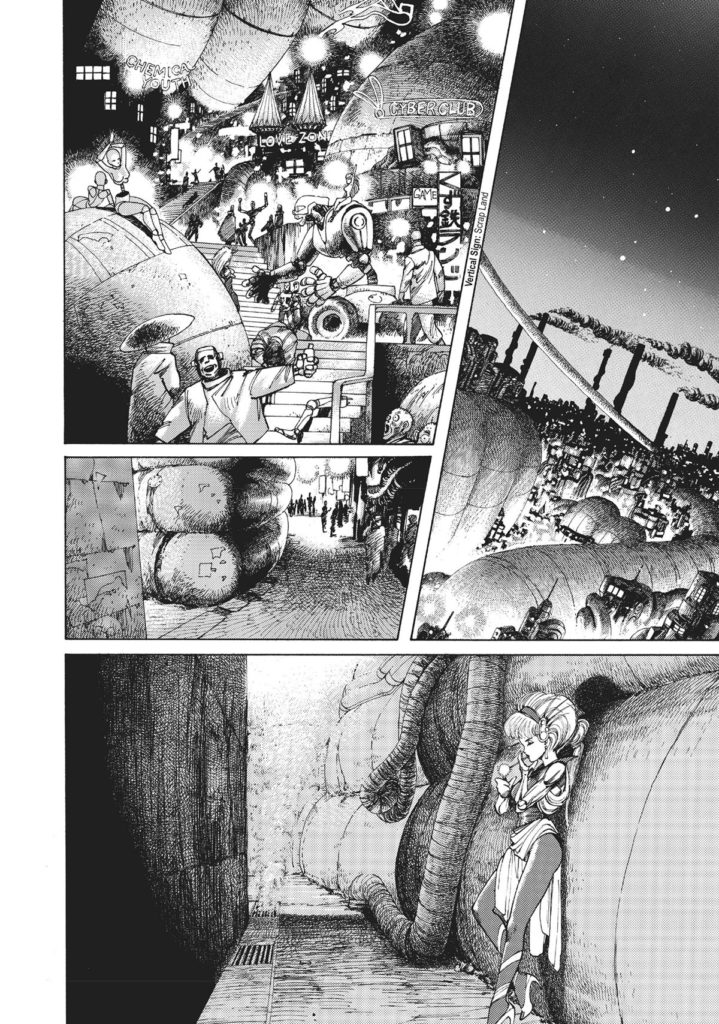
1:07:44 This image of Alita shaking herself dry on all fours, mechanically, is an insanely good drawing…

1:07:54 I’m a bad ass girl and I know it. “Your only opponent is me!”

1:08:30 In the cybernetic future, gender representation is fully customizable! That’s pretty cool!

It’s interesting because futurism and body-mod stuff, post-humanism and trans-humanism in general, this is a key tenet of those ideologies. These have become mainstream ideas in 2022, and I’d like to think that works like Alita had a positive effect in that regard.
1:09:45 So as I mentioned, I saw the anime before I read the manga, and this sequence with the hammer rocket starting up and having a sort of wobbly arc of a swing was SUCH a cool piece of animation. It looks really great in the manga too of course, enough for David to call it out, but it’s hard not to love the anime for me, since it was my first exposure.
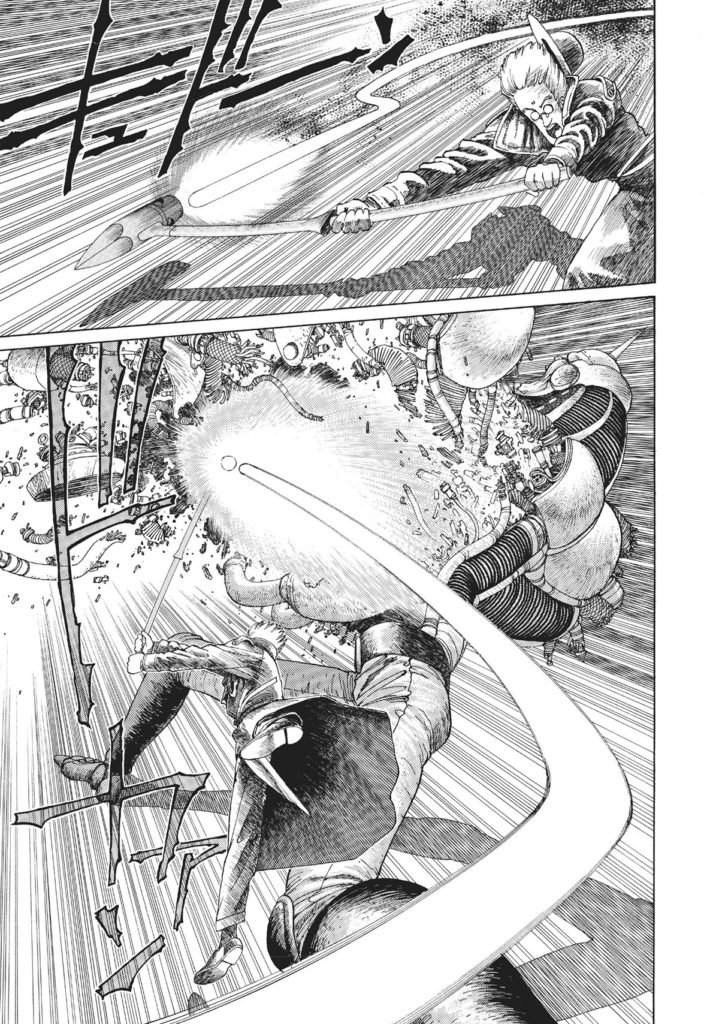
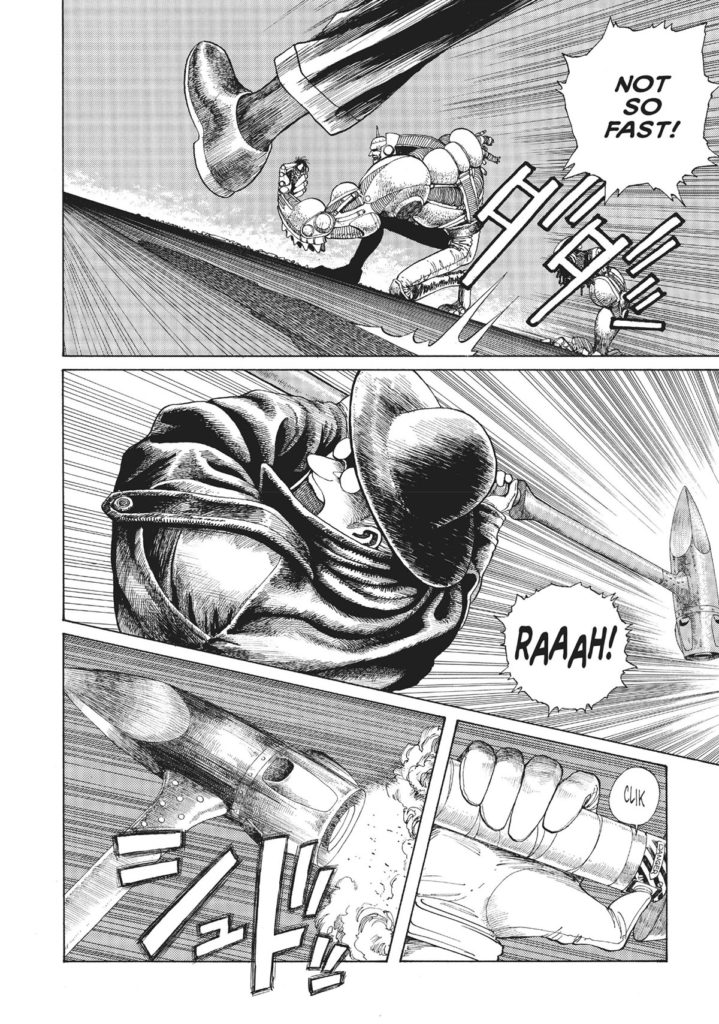
1:10:00 I really like, much like AKIRA and other manga of the era, that is has these weird, funny ‘cartoon’ moments, like the rolled-up-ball of thugs getting booted out of the bar, Bugs Bunny style. It’s ‘separate’ enough from the hardcore action not to taint either part, if you catch my meaning? I feel like we talked about this before sometime. Anyway, it worked for me here.
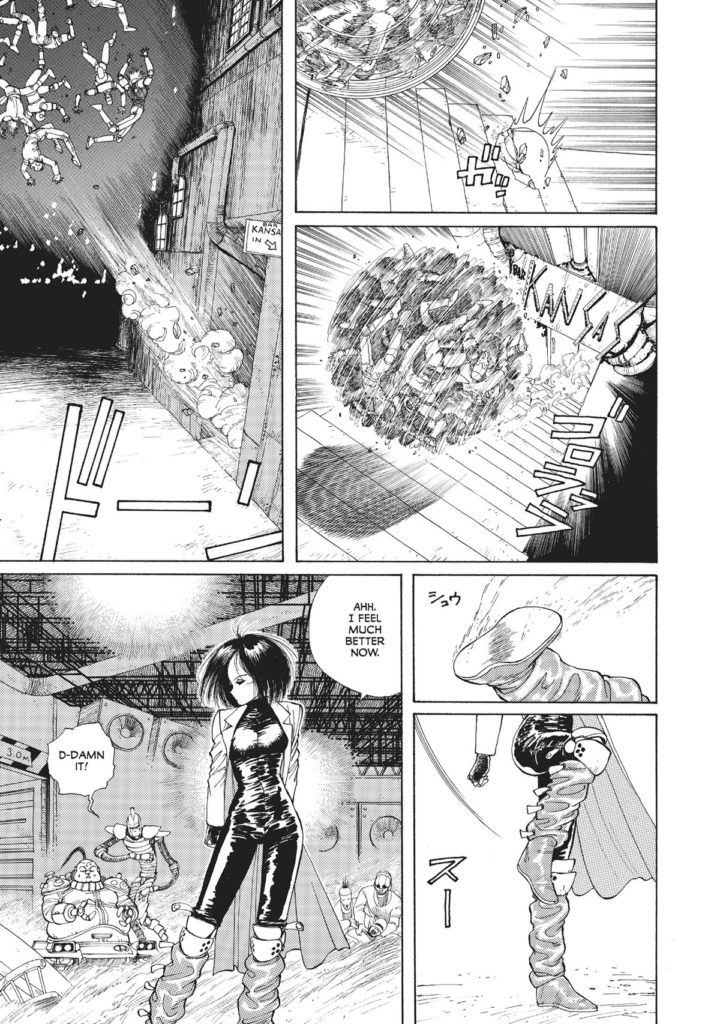

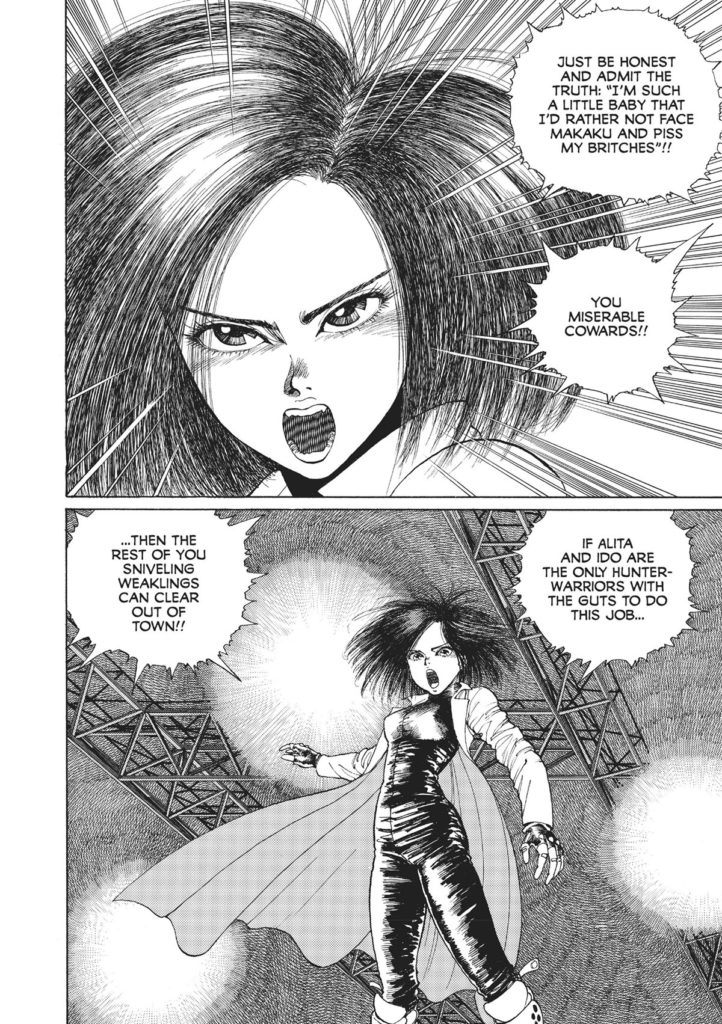
1:10:50 Boars Head! You’re so cool!
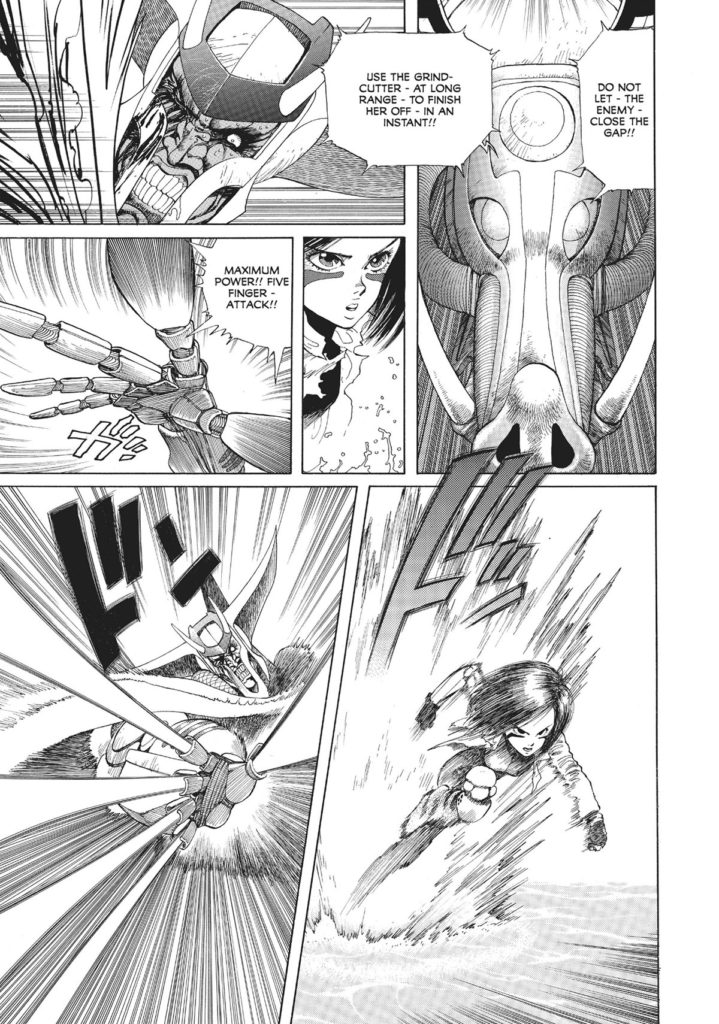

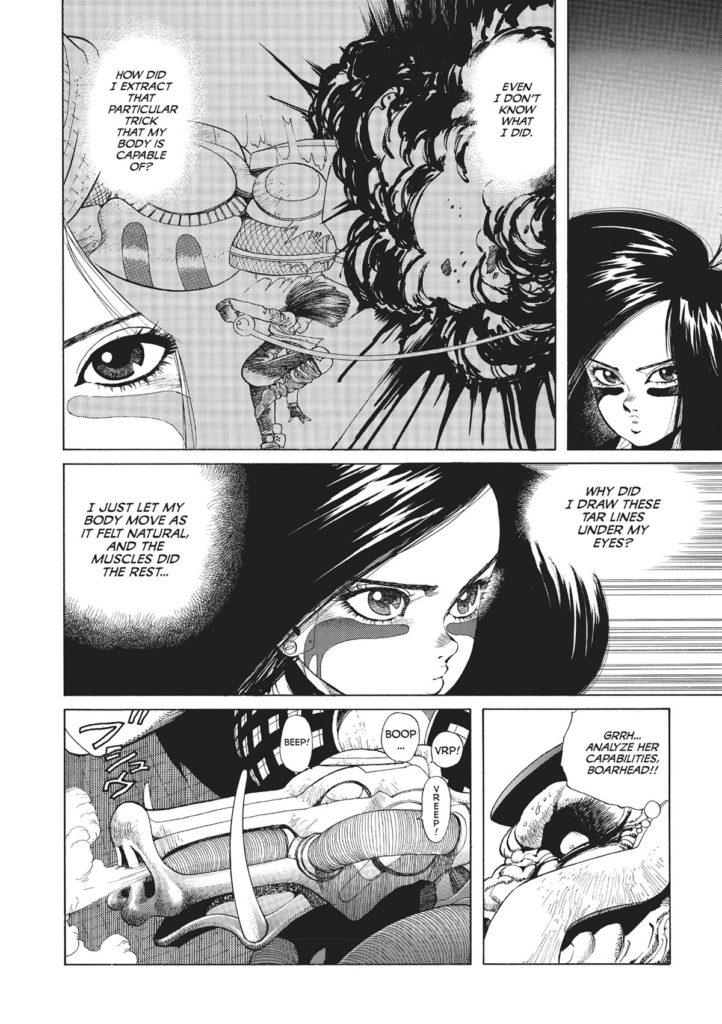
1:11:15 It’s interesting, because these sort of intense margin-notes are a hallmark of this era of creators. Kishito did it with the Neitszche reference Deb mentioned…
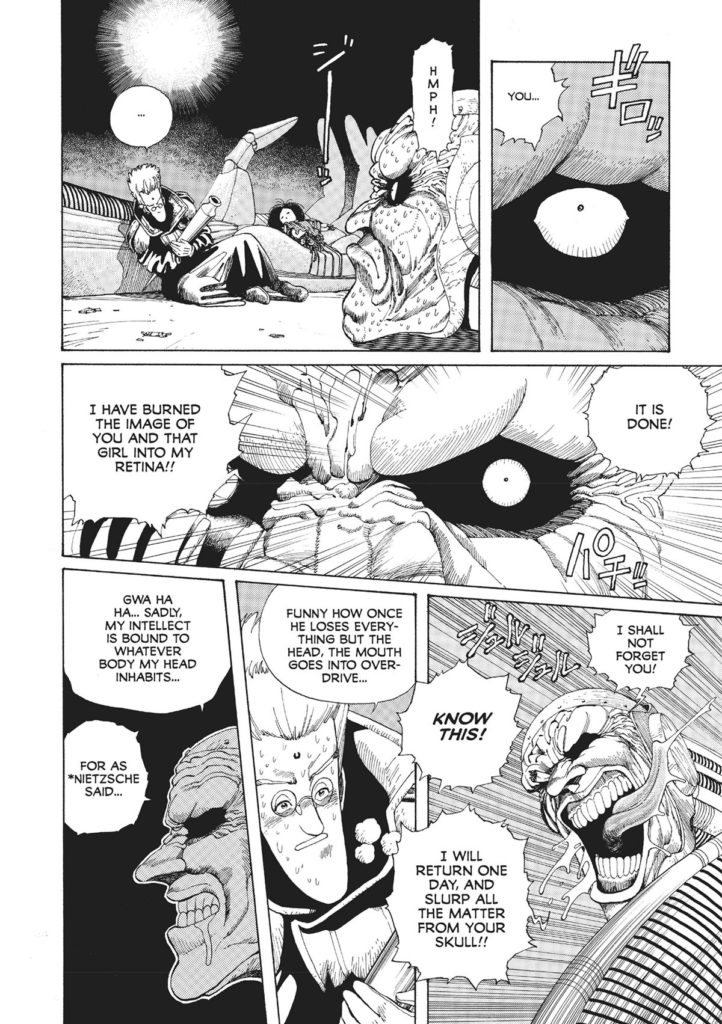
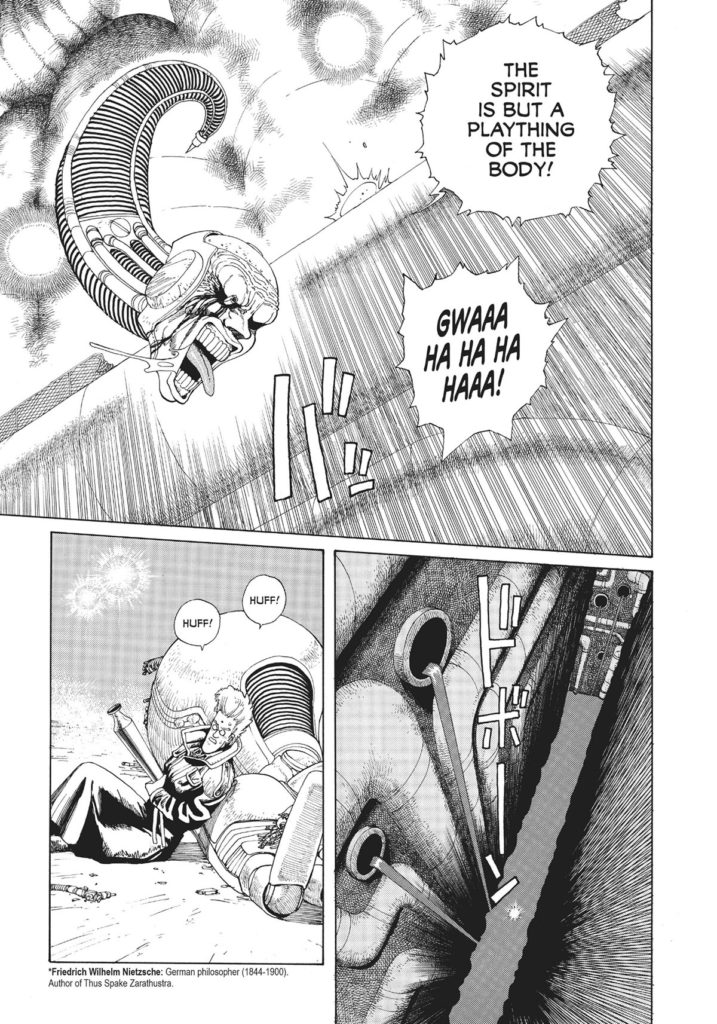

…but creators like Masamune Shirow were kind of the pinnacle of this sort of world-building comics-making. In fact, with Shirow’s creation Appleseed, he got so into the ‘notes’ as he called them that he would add to the main series that he eventually released two stand-alone volumes of notes for the series. This could be everything from explaining how the toaster in the future worked, to what cybernetic bodies were actually made of, to… well, anything could have a note, if he put enough thought into it.
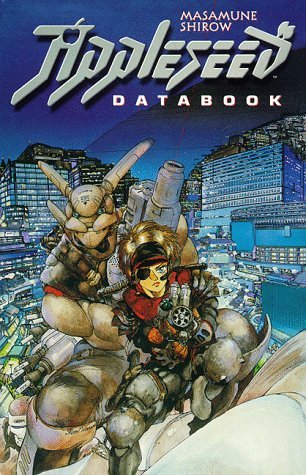
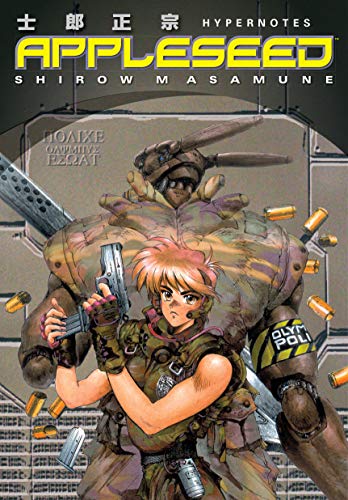
Interestingly, there’s a lot of this style of manga-making in the works Dorohedoro and Dai Dark by Q Hayashida, which we covered a few episodes back. Hayashida’s having a LOT more fun with it though, and gets less ‘into the weeds’.
1:12:34 That last fight in Battle Angel Alita volume 1, I swear the bad guys is completely different sizes at any given time. Here are a few quick examples.
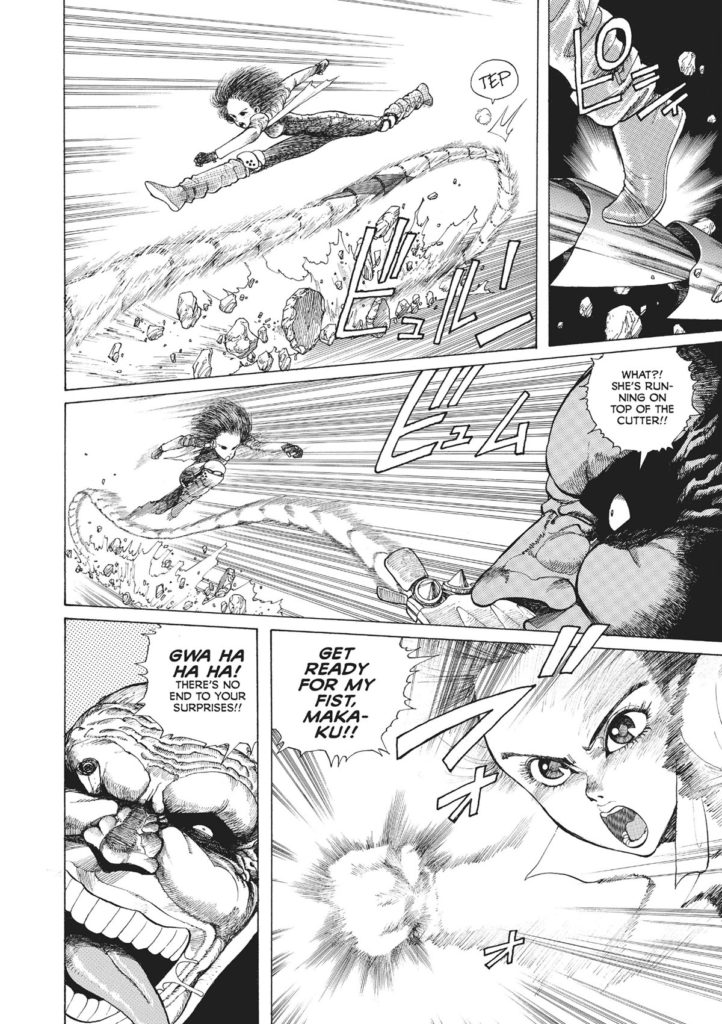
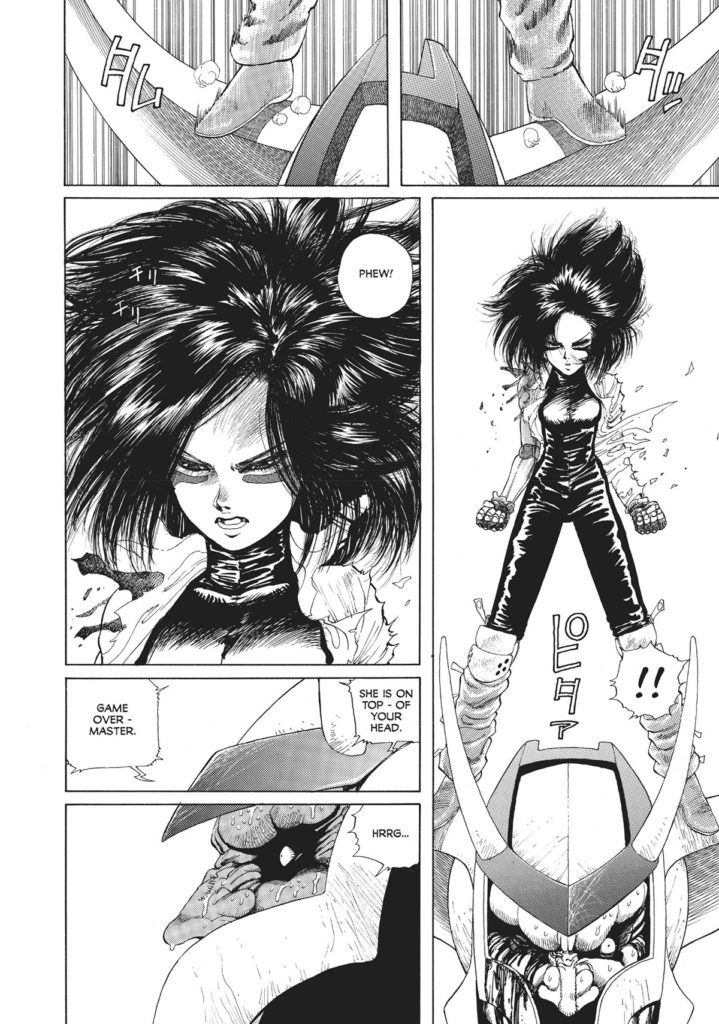
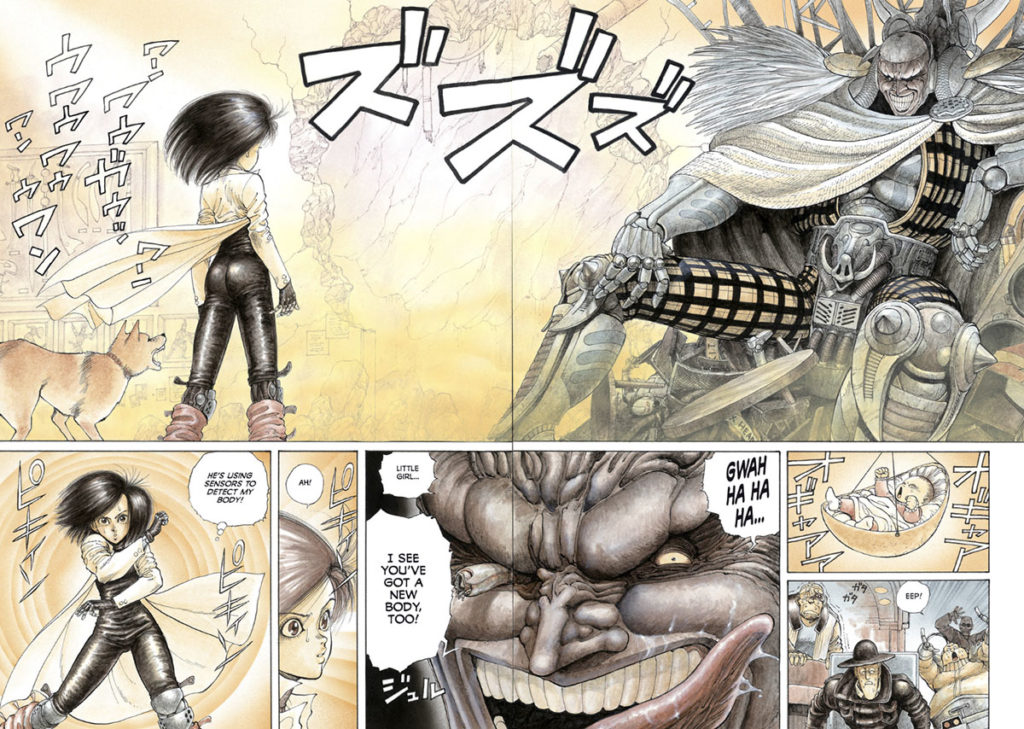
1:14:20 Chip mentions Western comics creators Tradd Moore and Simon Bisley, and how this looks like the love child of both. I can totally see it. While Moore’s work has gone in a MUCH more 1970s psychedelia sort of direction, his work on the series Luther Strode is probably what Chip is referencing.
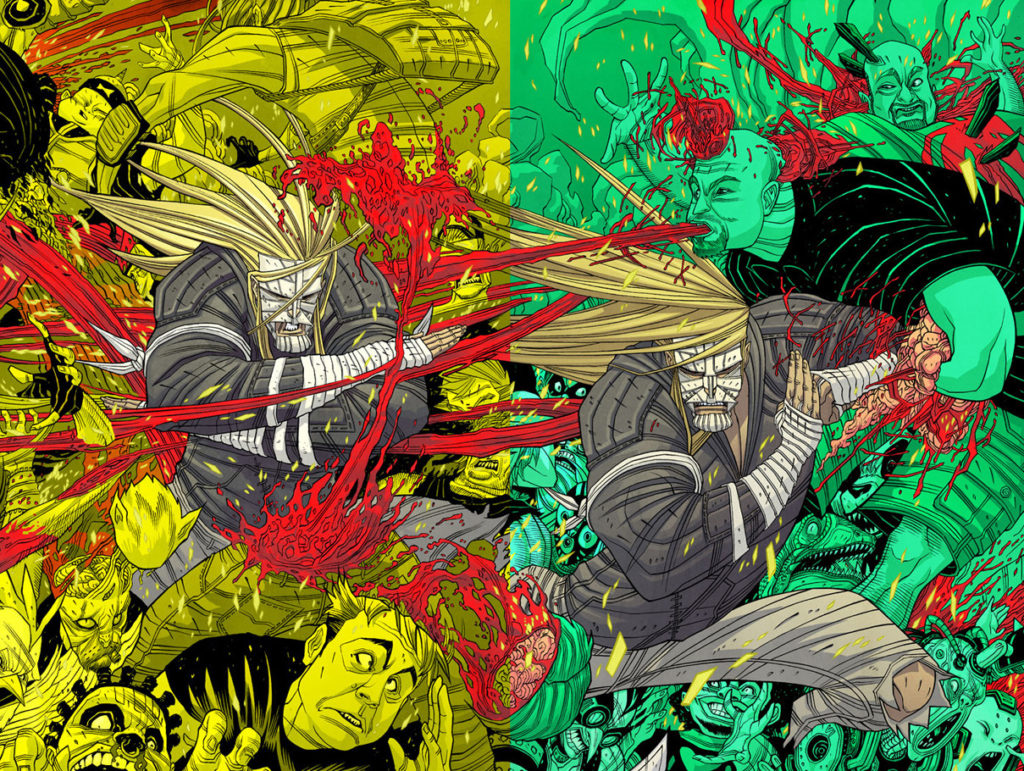
Meanwhile, it’s weirdly hard to find Bisley’s interior, black and white artwork online at a decent resolution, but you can kind of see what Chip’s getting at in this painting he created.
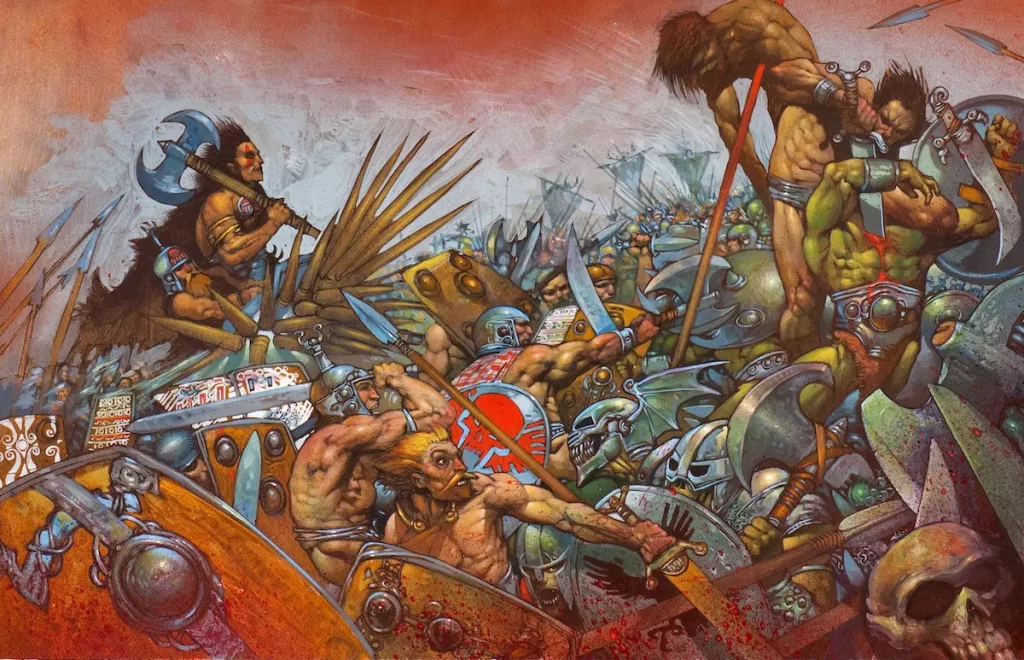
1:14:40 So the Cameron Hodge thing. The first chapters of Battle Angel Alita began serializing in December 1990. It was a monthly serialization, so let’s say the stories in the first book were published ending in June, 1991. David’s right that the character of Cameron Hodge was introduced in 1986, but his head-on-a-cyborg-body design didn’t make its first appearance until the X-Tinction Agenda crossover, which began around November1990. So I think without knowing for sure, this is just a case of similar ideas happening at the same time, or somehow they’re both influenced by the same root idea that we haven’t found yet.
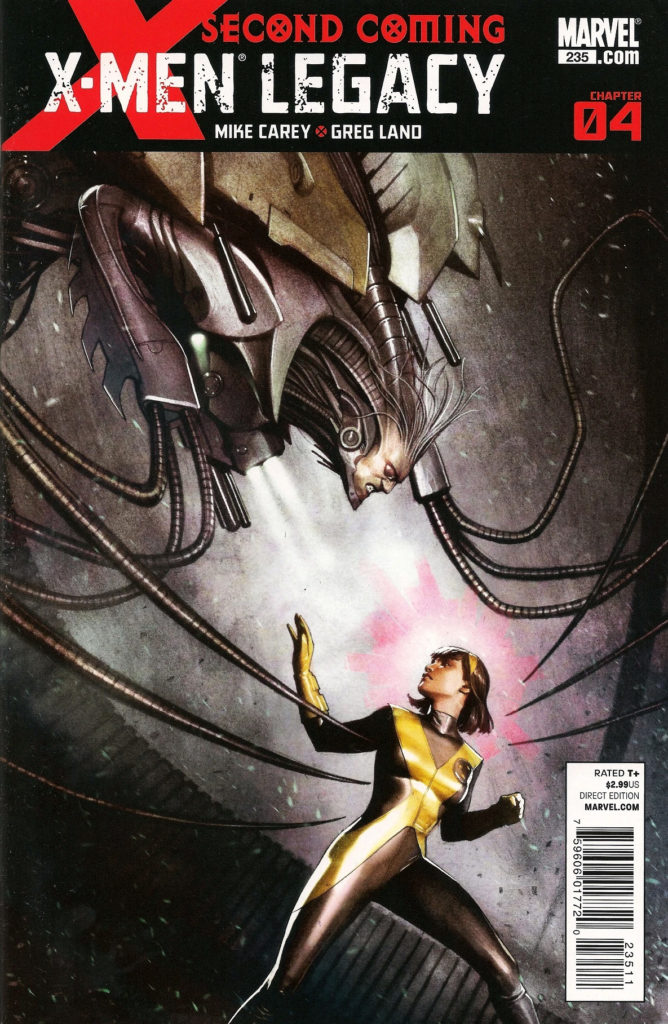
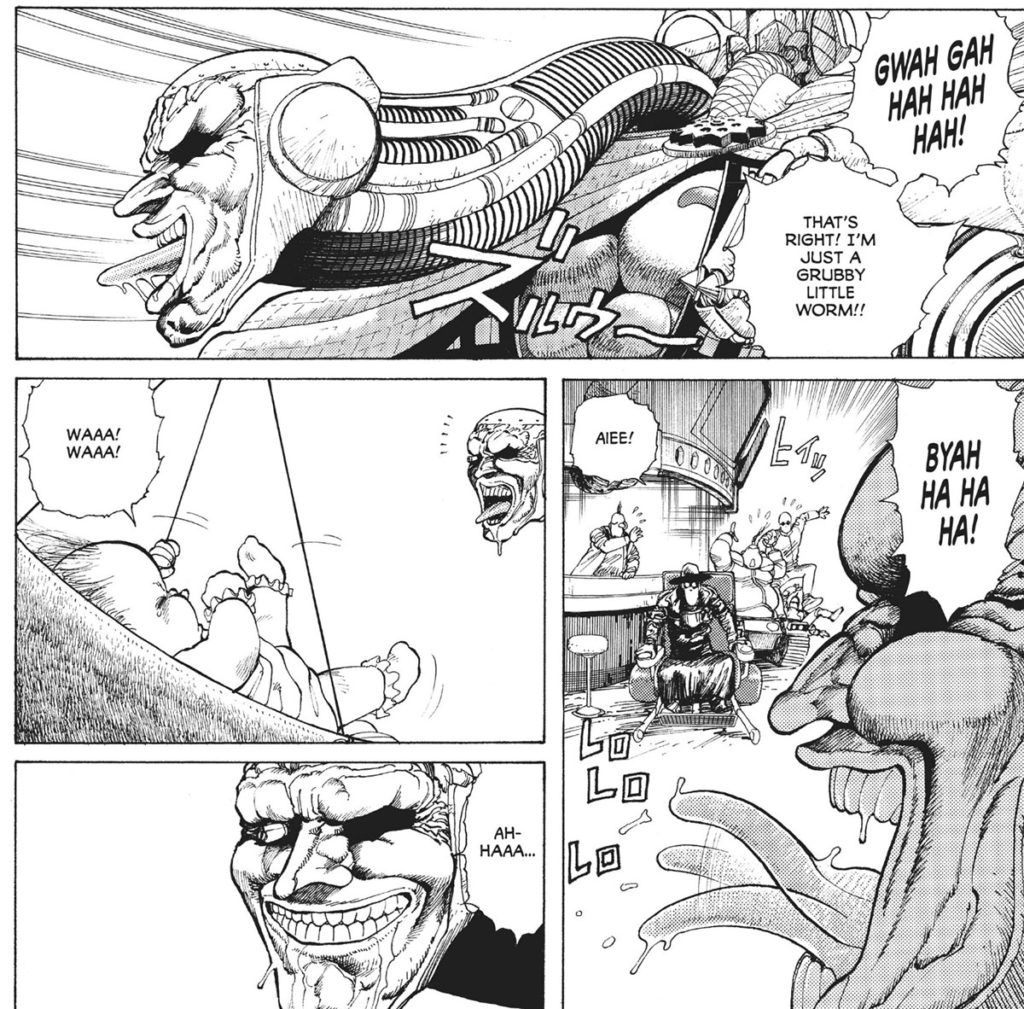
And that’s Manga Must-Reads: Battle Angel Alita! The complete series (and spin-offs!) are available now on Comixology Unlimited. Click the link here to check out a free preview. If you’re new to Comixology Unlimited, get a 30-day free trial when you sign up today at amazon.com/comixologyunlimited.
1:15:30: SECOND BREAK!
1:16:00 And now it’s time for shout-outs!
DAVID shouts out Barry, starring Bill Hader, making this either the second or third time it’s been shouted-out here. David and Chip REALLY like Barry. Look for it now on HBO or on Crave in Canada. I just got access to Crave, gonna have to eventually watch this.
DEB shouts out a webtoon this week, A Man’s Man, by Delgado. It’s kind of like Kosaku Shima, but going back in time in your own body sort of a thing to improve the present.
[Deb:] The twist I really enjoy in A Man’s Man is that when the character goes 20 years back in time, he lands right at a key moment in technology history – that moment right before touch-screen mobile phones like the Apple iPhone overtake PDAs like Blackberry phones. It’s also a time when women struggled to have equal voices, career paths and impact in technology companies, and the main character tries to right some of the wrongs of the past in that area too. It’s on track to be adapted as a K-drama in the near future, so look to hear more about this series soon.
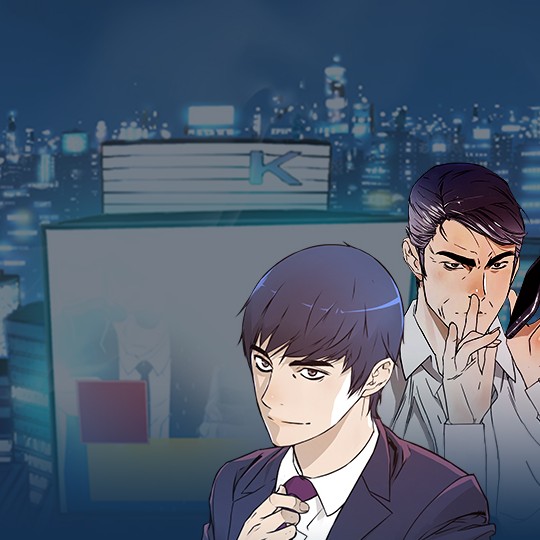
CHIP enjoyed being a guest on another Podcast because he’s a cheater! Check out Scott Aukerman’s “Scott Hasn’t Seen” podcast to hear Chip on the MORBIUS episode! You need to be a subscriber to Comedy Bang Bang for access, and you can do that at the link:
https://www.comedybangbangworld.com/
CHRISTOPHER shouts out Mangasplaining Extra. We just finished up Susumu Higa’s Okinawa. There’s two free chapters to read! It’s really good! Your subscriptions help us make more manga! Deb also did the first English-language interview with mangaka Akane Torikai, and it’s a good, thoughtful interview. Hooray! Check it out at https://mangasplaining.substack.com/.
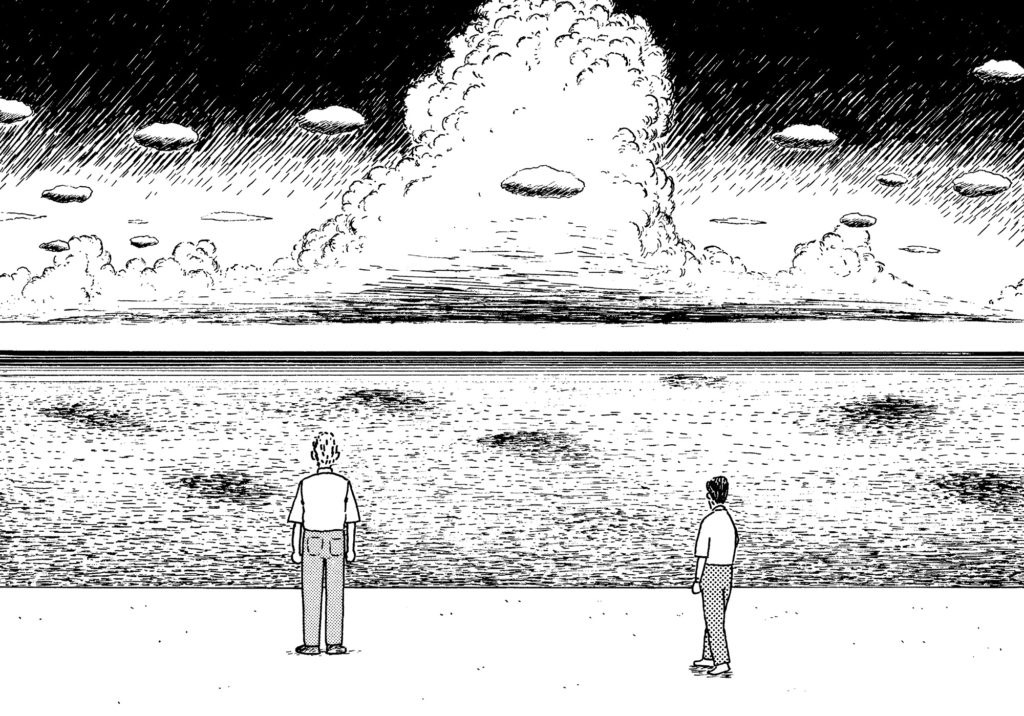
And that’s this week! Thanks so much for listening! Please support your local comic and manga specialty shop when purchasing these books, and you can find one near you at comicshoplocator.com. You can also check your local library for print and digital lending options, they have TONS of manga! Also, check us out at MangasplainingExtra.com — we’ve got some cool new manga series that we’re hoping to announce very soon. Finally, thanks to D.A.D.S. for their musical accompaniment this episode.
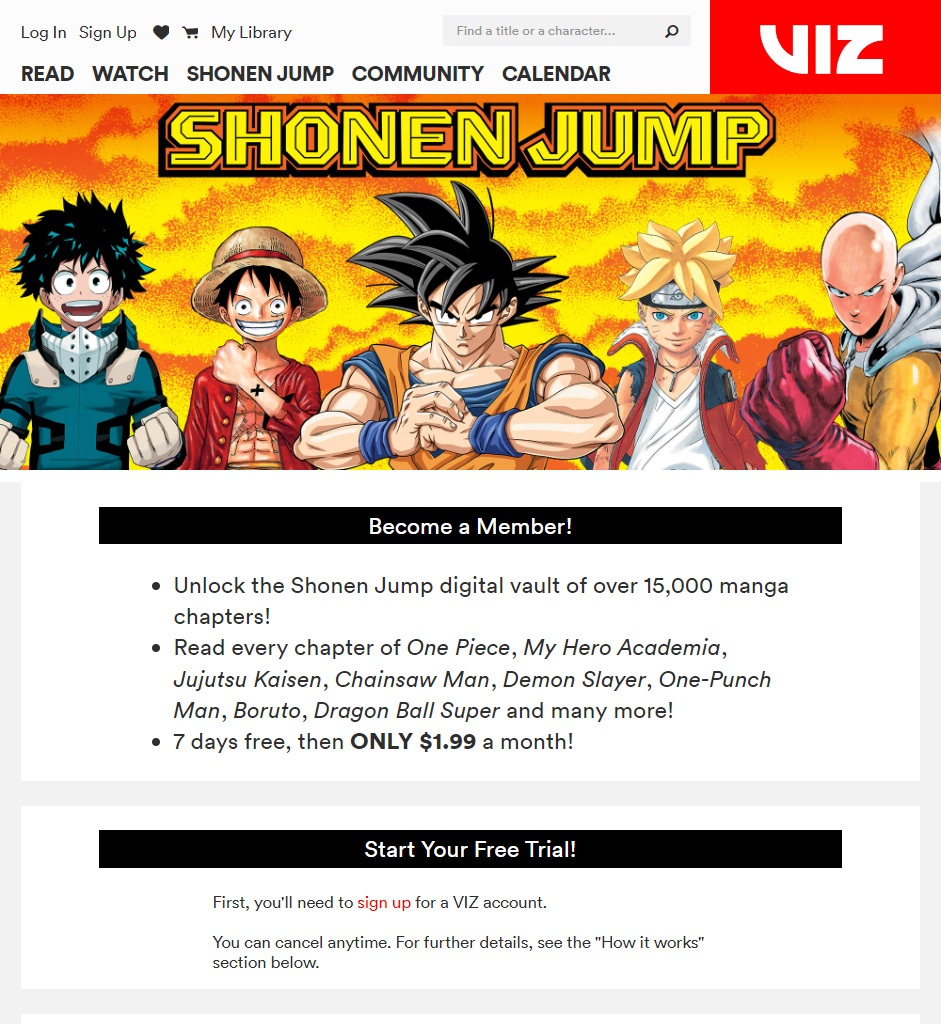
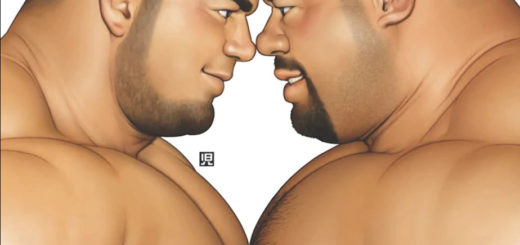
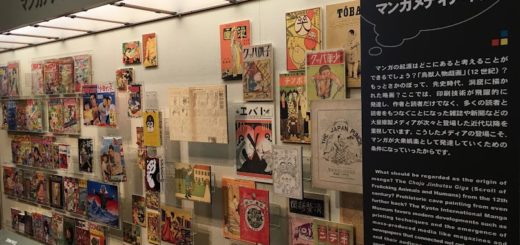
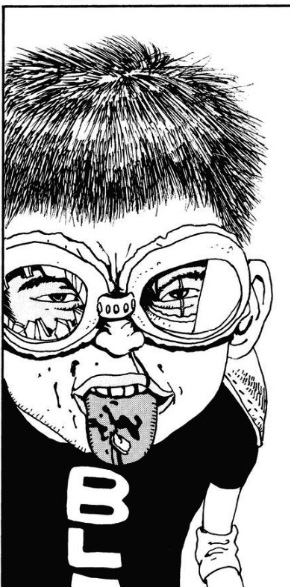
This double-header episode was quite an unexpected pleasure for me. I enjoy My Hero Academia quite a bit and look forward to each new installment, but Battle Angel Alita is a formative comic for me. Yukito Kishiro, Masamune Shirow, and Tsutomu Nihei form a triumvirate of transhuman science fiction comics creators releasing work at around the same time, and a lot of work I enjoy now was clearly influenced by them.
While I lack any sort of qualifications to say this, my feeling is that Kishiro has the broadest foundation in illustrative technique of the three. Nihei’s sense for architecture and design is very strong, but he took a while to find his footing in figure drawing. Shirow is great with individual illustrations, but I personally feel that his action sequences can be hard to follow (though I’m sure there are many who will disagree!).
Kishiro, though, came out of the gate strong on every front and just kept getting better. I agree with Chris that his sense of scale and proportion is a little shaky in this first volume – it could be deliberate, but since he becomes more consistent about this later it’s either a mistake or an approach he discarded. In so many other ways, though, he’s doing really impressive work – figures, landscapes, technical drawing, action choreography, and cartooning are all solid.
I think Kishiro’s cartoon character design is one of his consistent strengths – he’s creating a grand epic with a lot of important characters, and his designs are all distinctive and memorable. Because of this, he can, in later volumes, call to mind the scope of Alita’s journey in one illustration by drawing all the faces she’s encountered on her way. It’s a move that always works for me, and not everyone has the style to pull it off. Kohei Horikoshi definitely does, and it serves him well in managing My Hero Academia’s big ensemble cast.
Kishiro’s action scenes are also an obvious strength. His cyborg fighters have superhuman strength and speed, and he uses all his skills as an illustrator and storyteller to convey that fact with maximum impact. In the domain of the cyborg martial artist, air is as thick as water, metal is as soft as butter, and every second is an eternity – though of course, talking is always a free action. Combatants trade blows in a world that is slowly shattering around them. I’m almost certain SuperHot wouldn’t exist without Shirow, but I also suspect it wouldn’t exist without Kishiro.
I think I’ve probably gone on long enough. Thanks for covering a comic that means a lot to me. If you do decide to cover Shirow later, I think it’ll be an interesting conversation.
My best way of describing the difference between the main title and vigilantes is:the main is: what if the X-Men were a Shonen Battle Manga.
Vigilantes is: what if Spider-Man was a Shonen Action series.
As time went on, I ended up liking Vigilantes much more than the main series. It is funnier and feels more lived in. (Plus the main character is a huge All Might Fanboy. So much so that the “costume” he wears is an All Might hoodie. )
These days with the amount of mega destruction happening in every issue, the world just doesn’t feel real anymore.
I appreciated this as an introduction to My Hero Academia–about a year back my then 12 year old niece and her friends were *obsessed* with it and went as various characters for Hallowe’en (all male characters) and, knowing I love manga, she asked me who MY fave character was, and was shocked I had never paid any attention to it (but admitted she didn’t really like the story, just the characters.) It seems like the kind of thing that if I find in one of those free street corner “libraries” I’d pick up and enjoy (hey, I found the first three volumes of Death Note and the first five of One Piece that way!) but otherwise, wouldn’t like enough to pay for. But aside from some basic classics like the Frank Miller and then Ann Nocenti runs of Daredevil, or some of the especially soapy classic X-Men (I’m gonna say things like Moore’s Swamp Thing don’t count), I really don’t have a close enough connection to superheros to really get much out of this. In fact I just *barely* have enough knowledge to get *most* of the superhero comics and creator comments that pop up in this podcasts…
I have a similar background to Battle Angel Alita as Chris and David. It was one of the first fansubs I saw back when I was 13 (the fansubber just added it to fill out one of the blank videos I sent him–I was probably getting a Ghibli fansub, or Marmalade Boy which I was hooked on, so that shows you how not my thing the Gunm OVAs would be.) I liked it fine–fine enough that I picked up some of the Viz single issues a few years later (but at the time I grabbed virtually any English manga I could find and afford). I was mildly curious about the recent movie, but still haven’t gone out of my way to see it.
What did make an impression from the OVAs, and still is a favourite of mine now, was the ED theme song, Cyborg Mermaid which is just 90s j-pop GENIUS. https://www.youtube.com/watch?v=kKACZjaH6nQ
And YES to the suggestion to cover Okazaki’s River’s Edge when it’s out this December. I think it is the kind of Josei Chip would like (though I have to go back and listen to your Helter Skelter podcast again…) and, it’s a personal fave (thanks to the LONG out of print French Edition). And selfishly, irt was meant to be her third manga from Vertical over 10 years back, but after Pink and Helter Skelter under performed, it was cancelled as were plans for more of her work in translation, so I want to see it get as much publicity as possible.
Deb and I are both SOOOO psyched for it. – Christopher
In the opening chapter’s silhouette, I wonder if that is Gekko Kame (Moonlight Mask) the tokusatsu forerunner to Kamen Rider. Looks closer to the anime version than the live-action version, though.
I thoroughly enjoyed the conversation about Boku no–oops!–My Hero Academia. Definitely feel I’m in the Chip category here of not really being excited for U.S. superhero tropes being filtered through shonen manga tropes. I do like the art and inventiveness of the superheros, but it feels a little too Naruto for my tastes, and I got burned out on that one sometime after some flashback interrupted an action scene for the 800th time. Still, if it does end soon and it sticks the landing, I could be tempted to pick it up.
I’m 100% with David in preferring the manga to the anime. A lot of anime, especially the broadcast version, really does an astounding job of sanitizing what’s so good about the page composition, panel layouts, and pacing, that it can feel bloodless at times. The soundtrack, colors, and voice acting can make up for it (and Attack on Titan is that rare example of the anime improving on the manag), but usually the anime lacks the visual panache of well-crafted comics page. I think “Demon Slayer” might be another one where the anime rises above the source material, because they’re not working at breakneck pace to keep up with the manga, eventually outpacing it. The studio is taking its time to craft that one, so you can feel the quality, and you don’t have to deal with entirely made-up episodes like Goku learning to drive or Naurto eating ramen all day.
Wow, Battle Angel Alita… That brings me back. I remember just trying to wrap my head around the art style. My brother and I kept calling Ido “Egon” because the way he:s drawn, and the fact that he’s a scientist, reminded us of the character model for Egon Spengler from the Ghostbusters cartoon. I don’t remember finishing the series, maybe because we had watched the anime and the publication was sporadic at best.
Cameron Hodge! You know what reminded me of him not too long ago? The Emperor clone in the Rise of Skywalker, because he was hooked up to this big crane thing that moved around. Probably the only thing I remember from that movie.